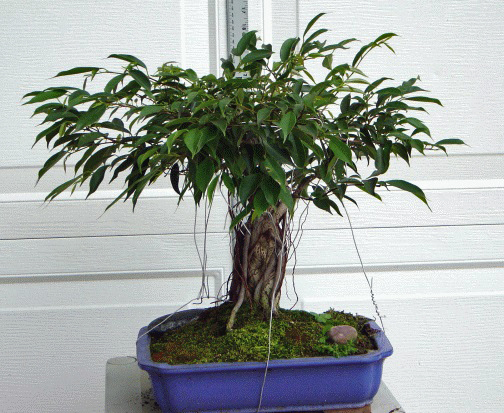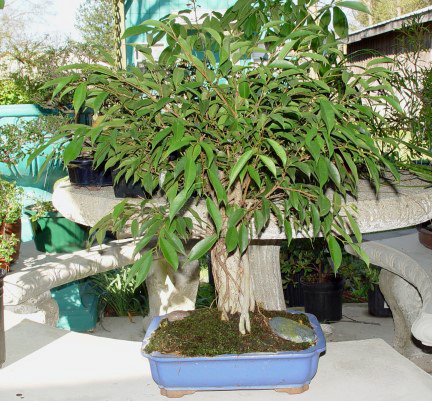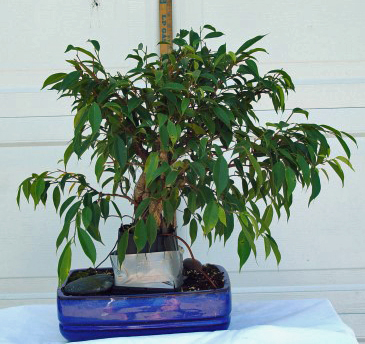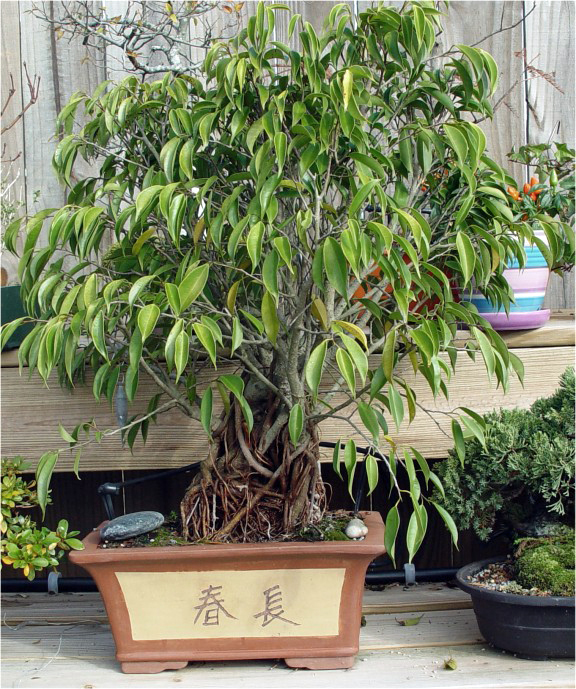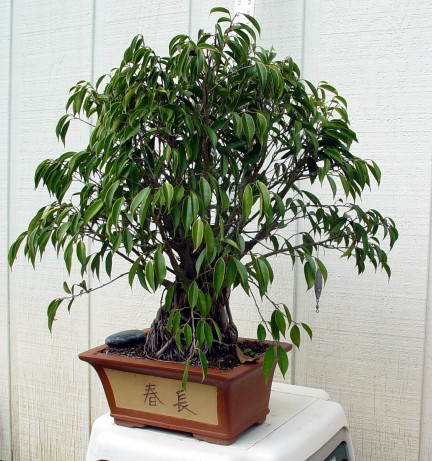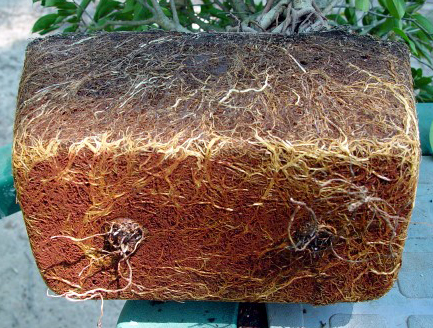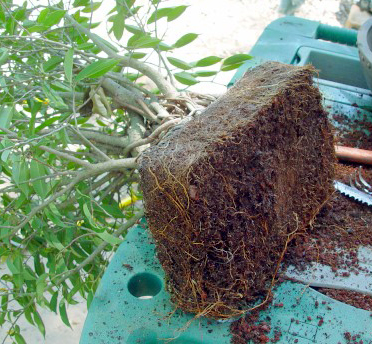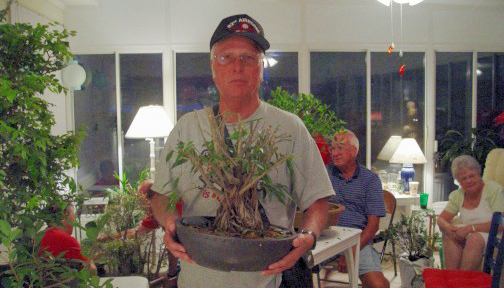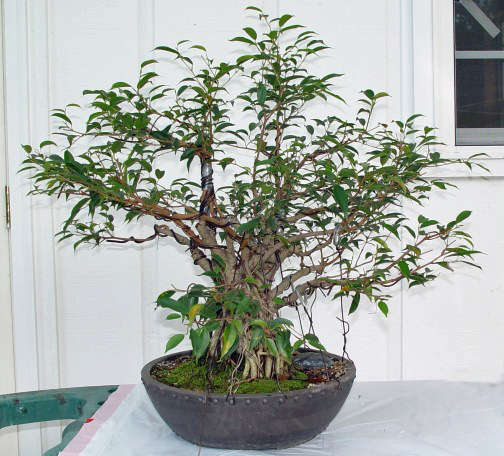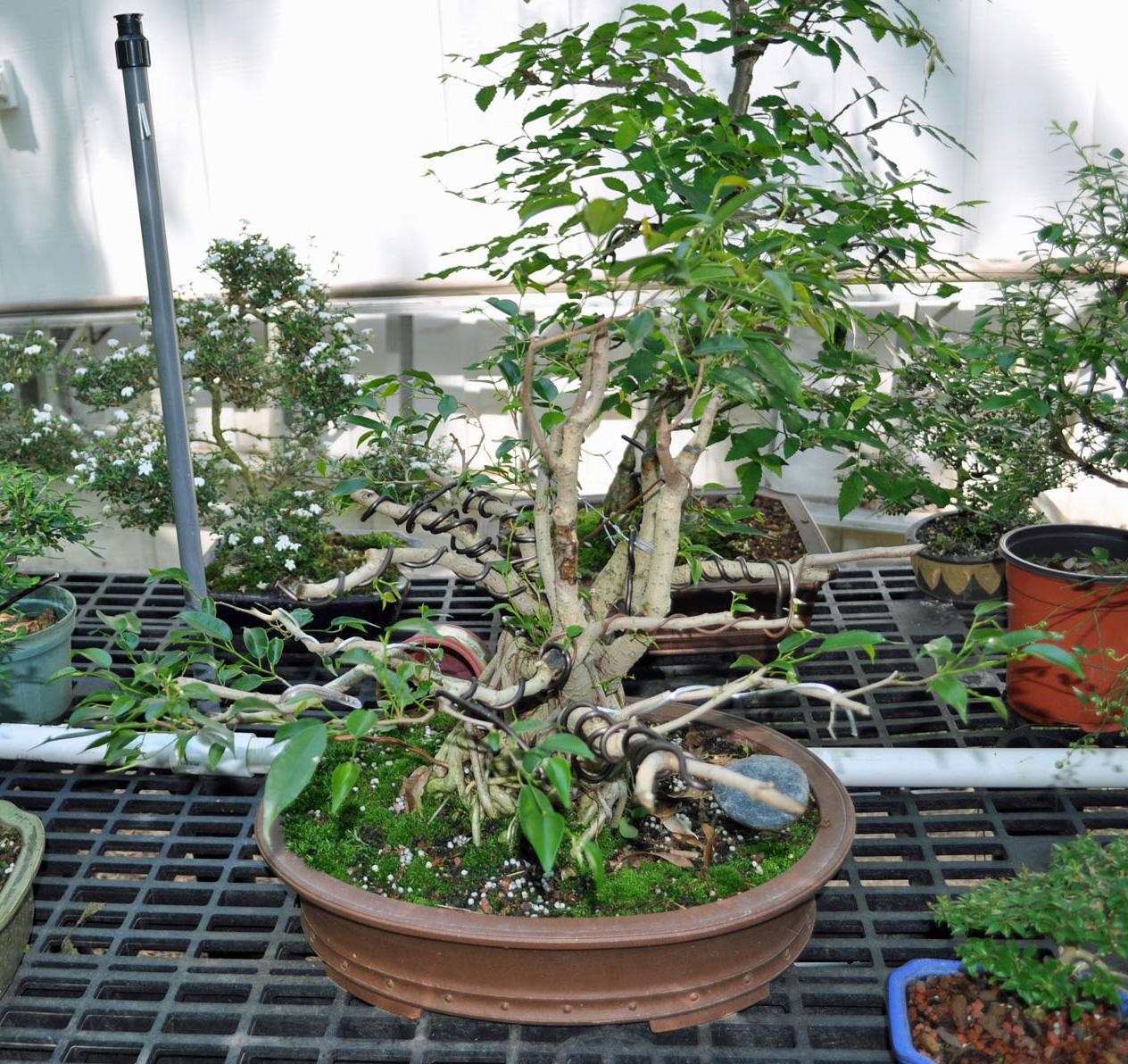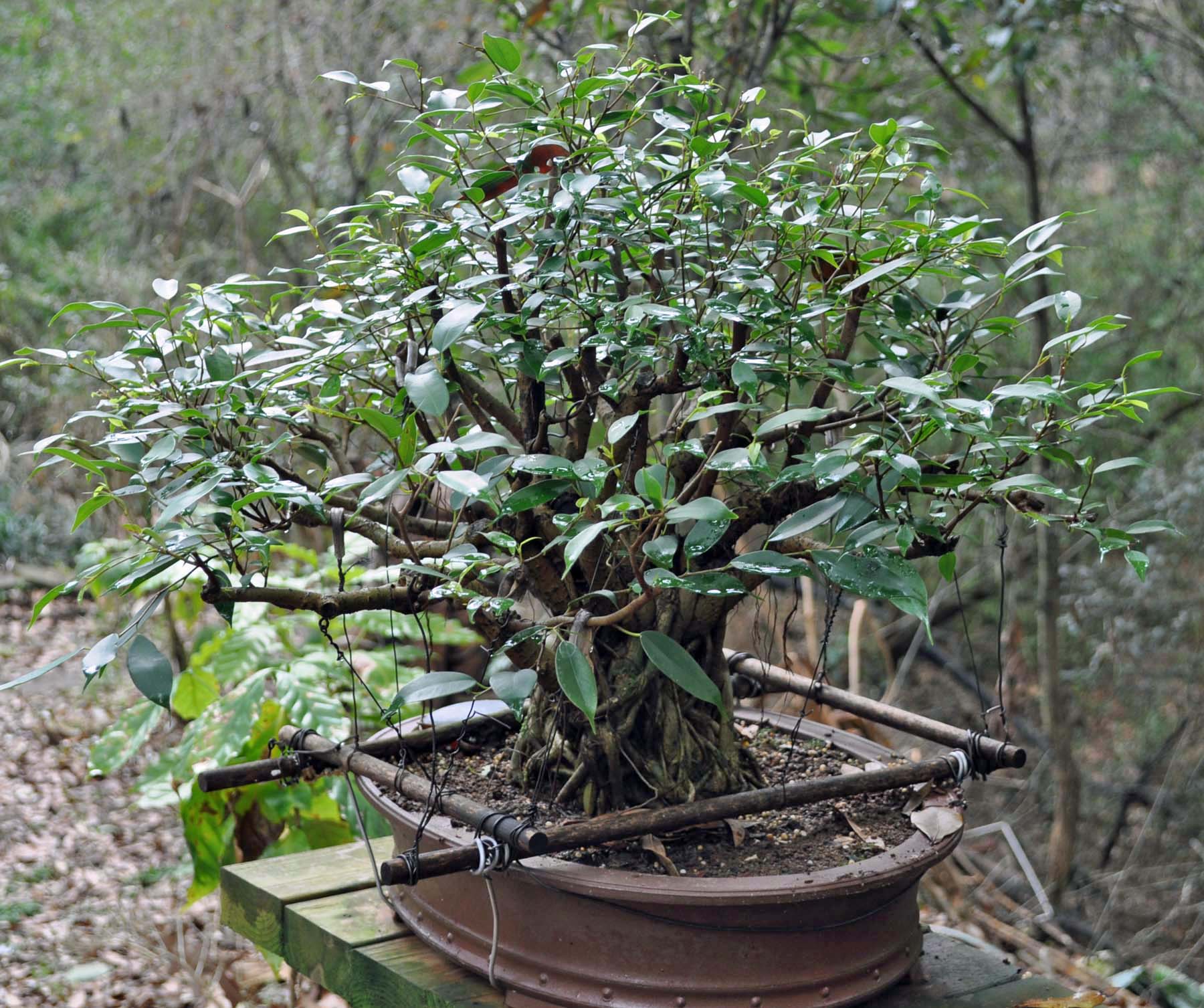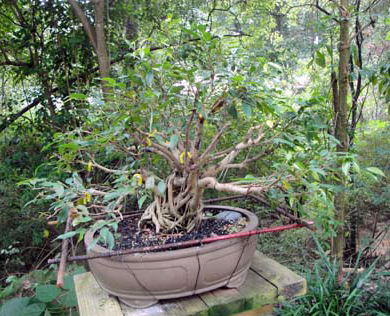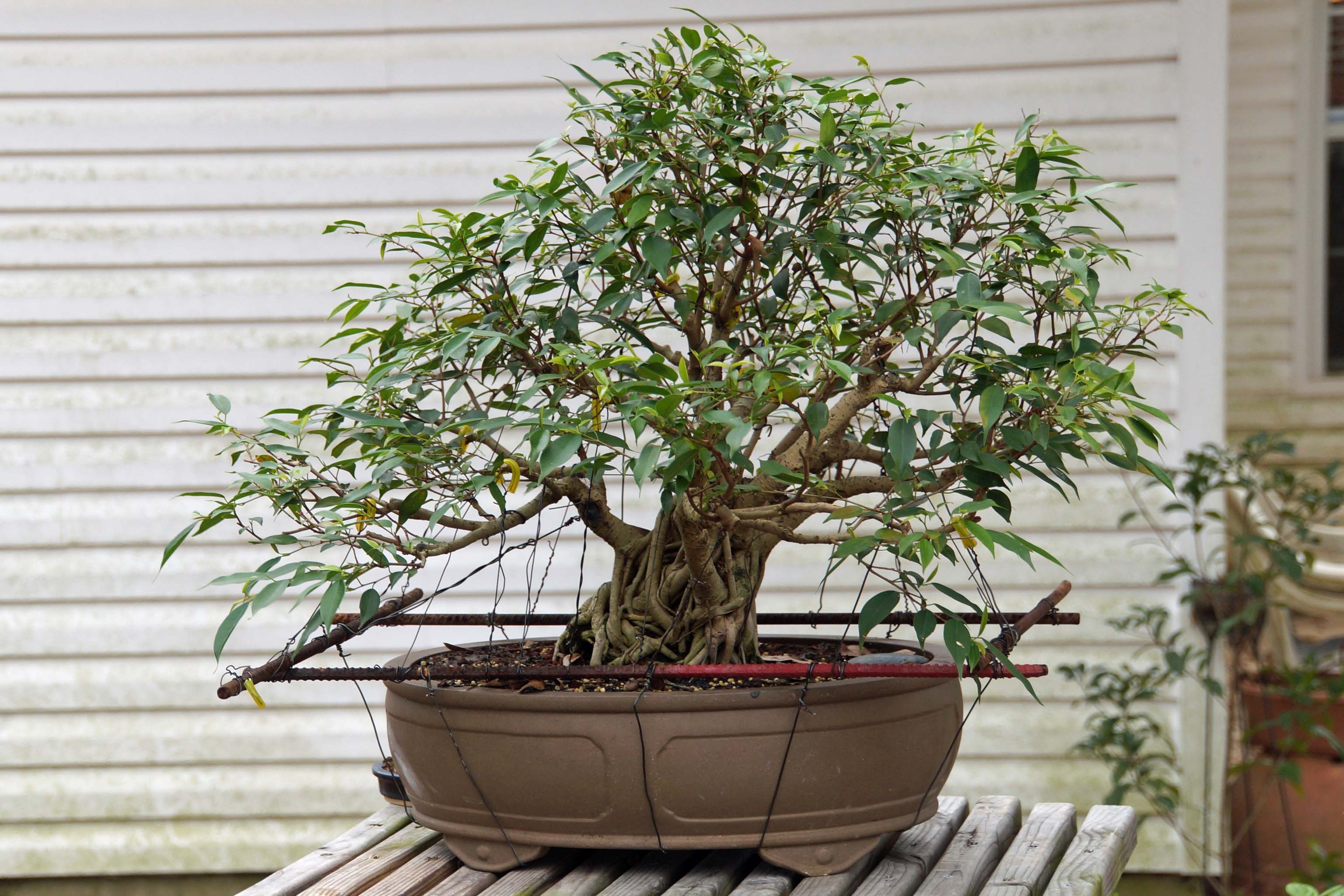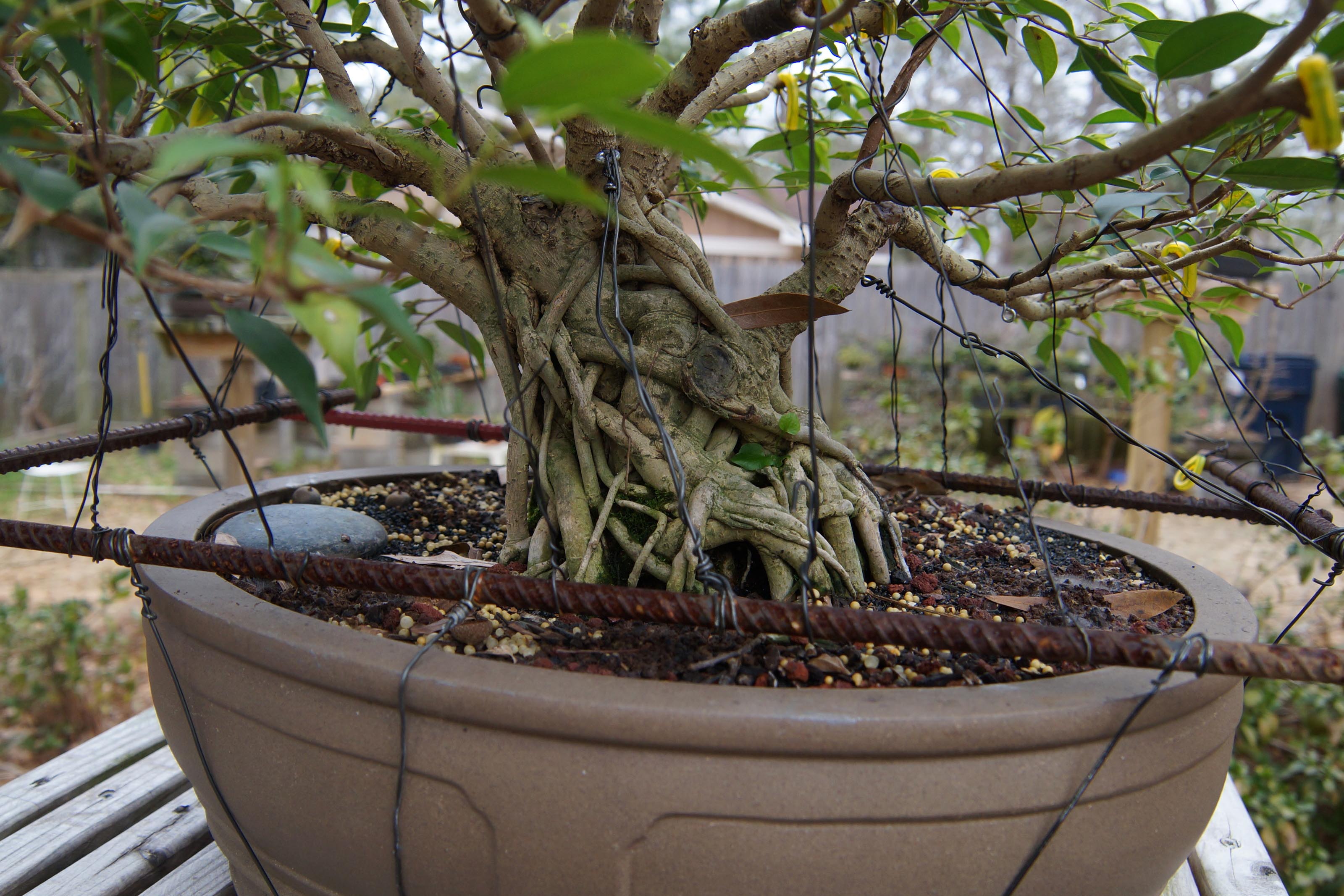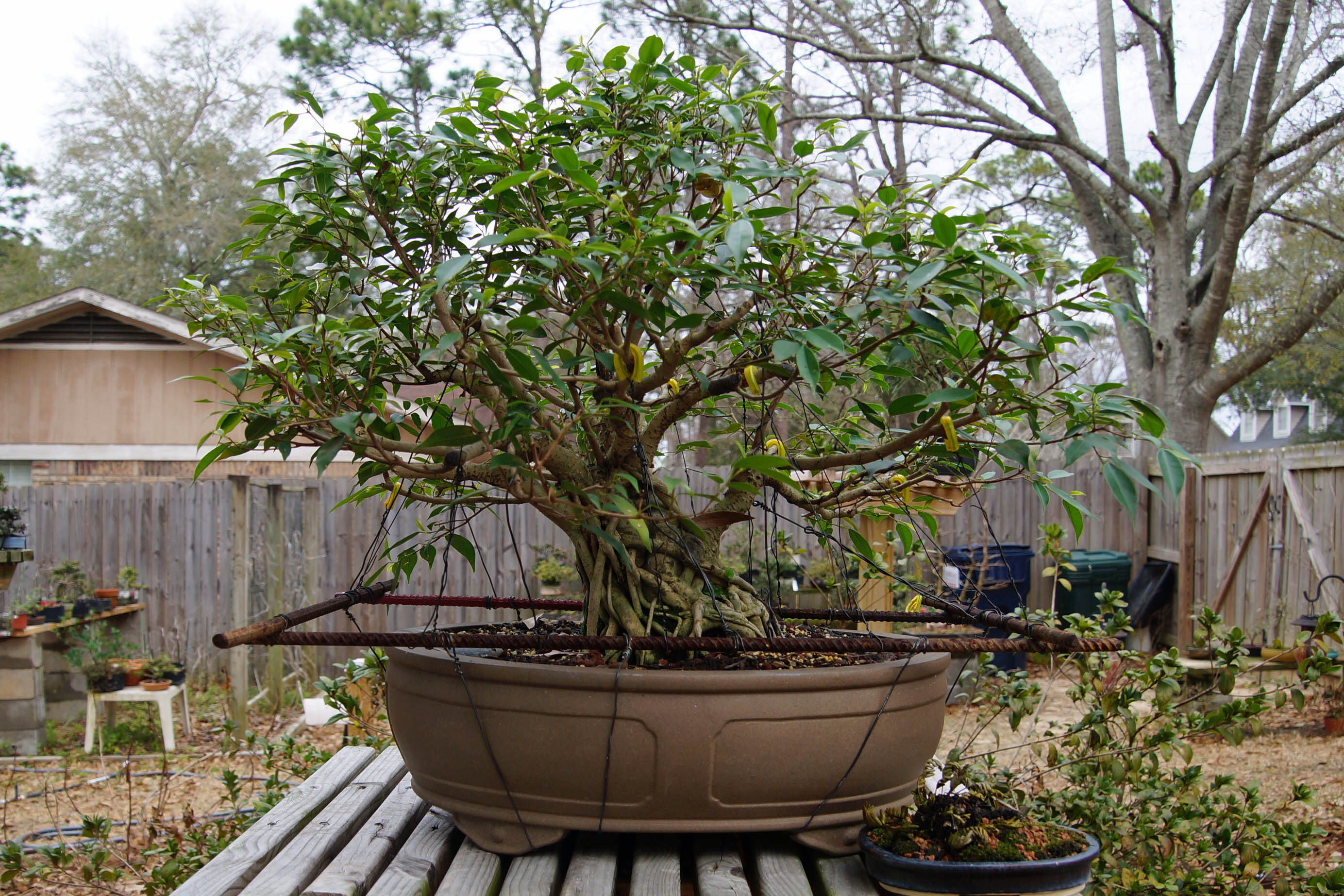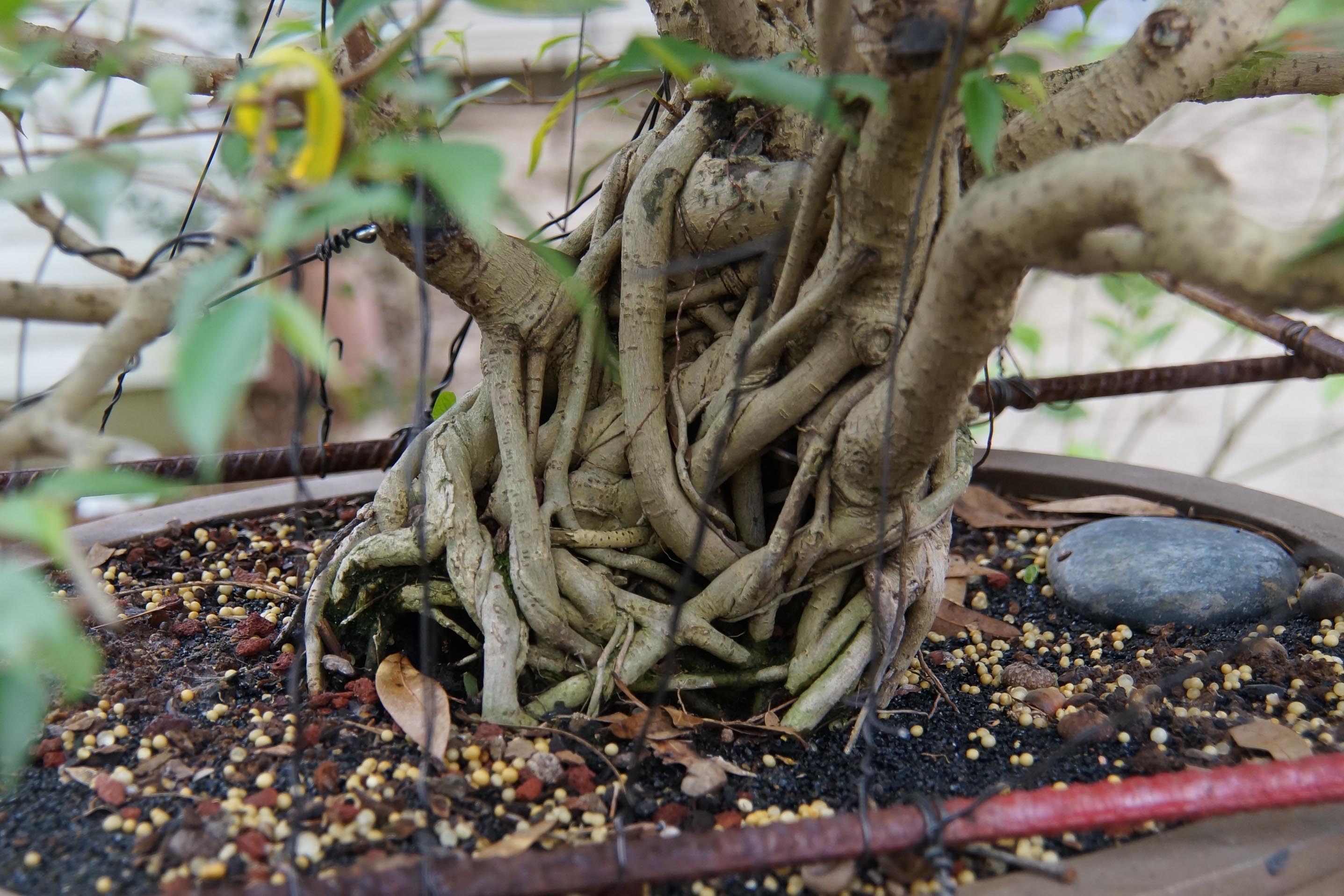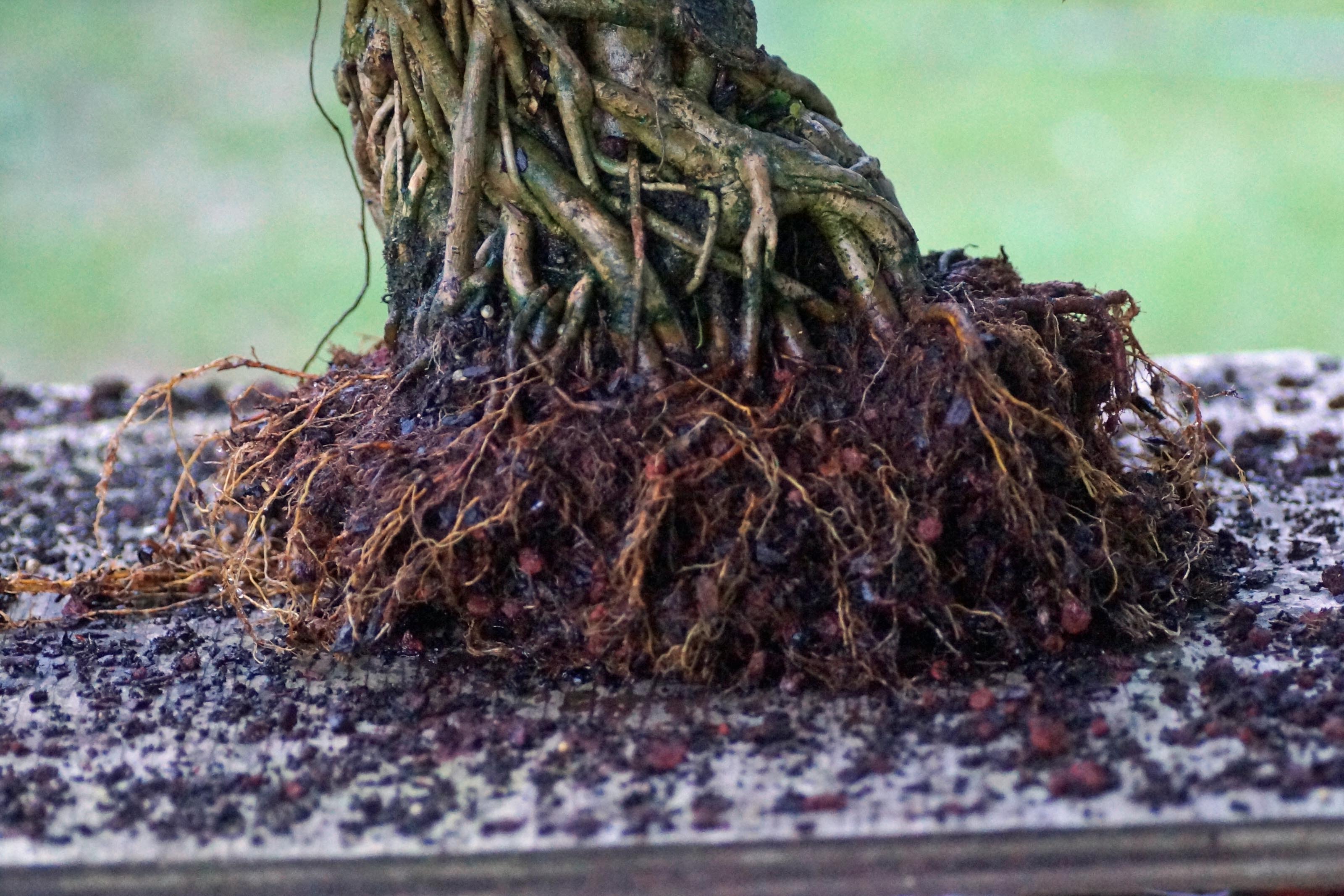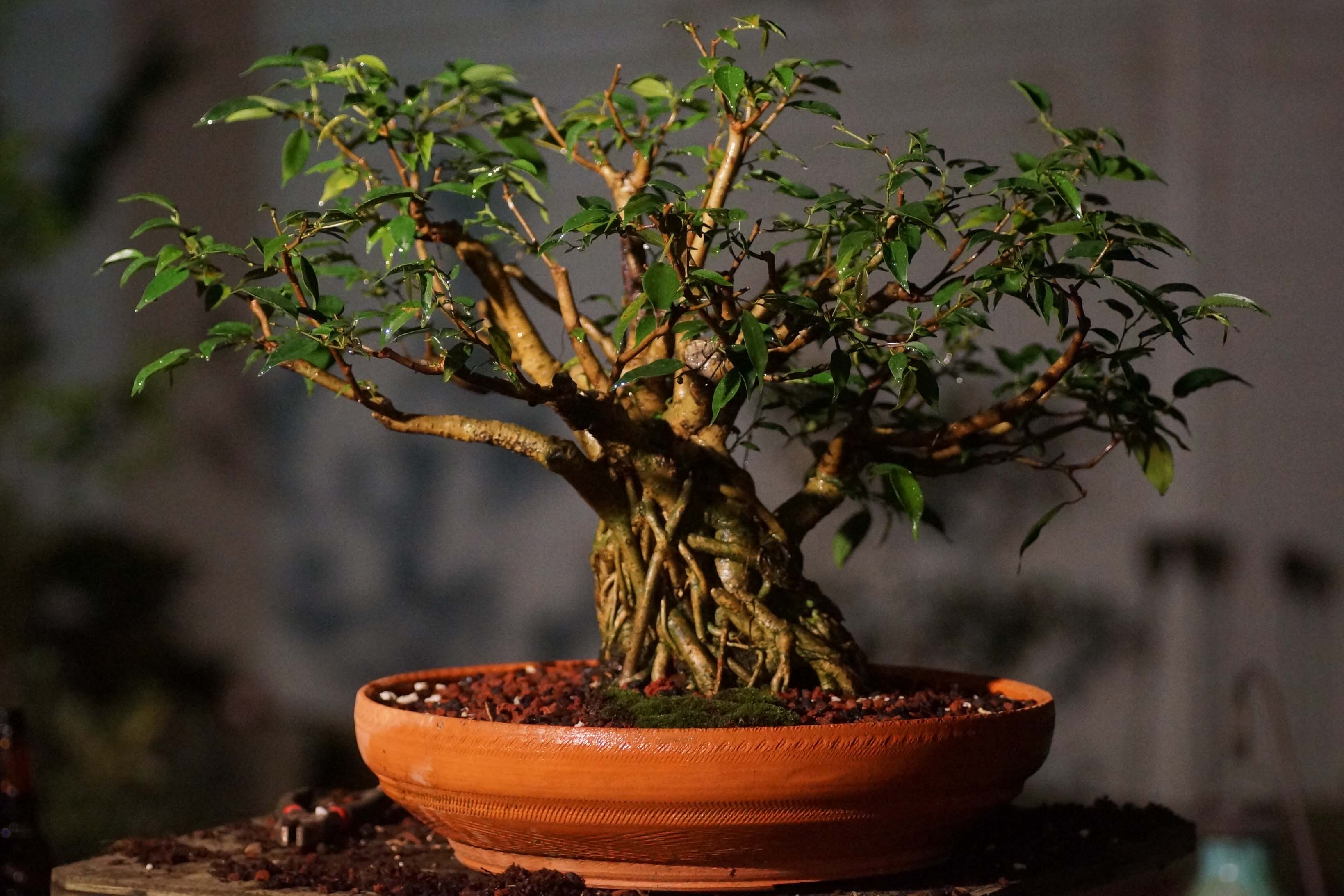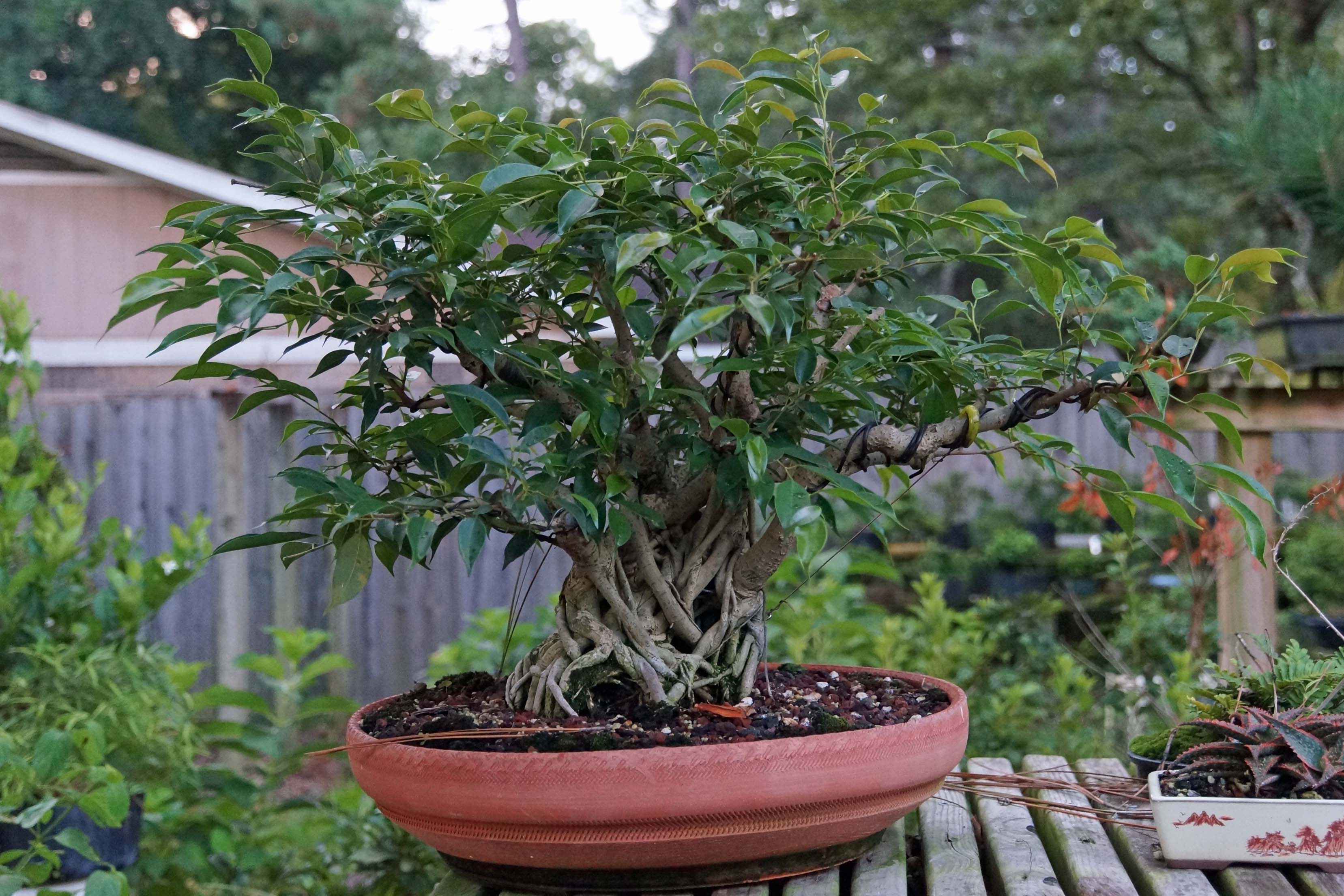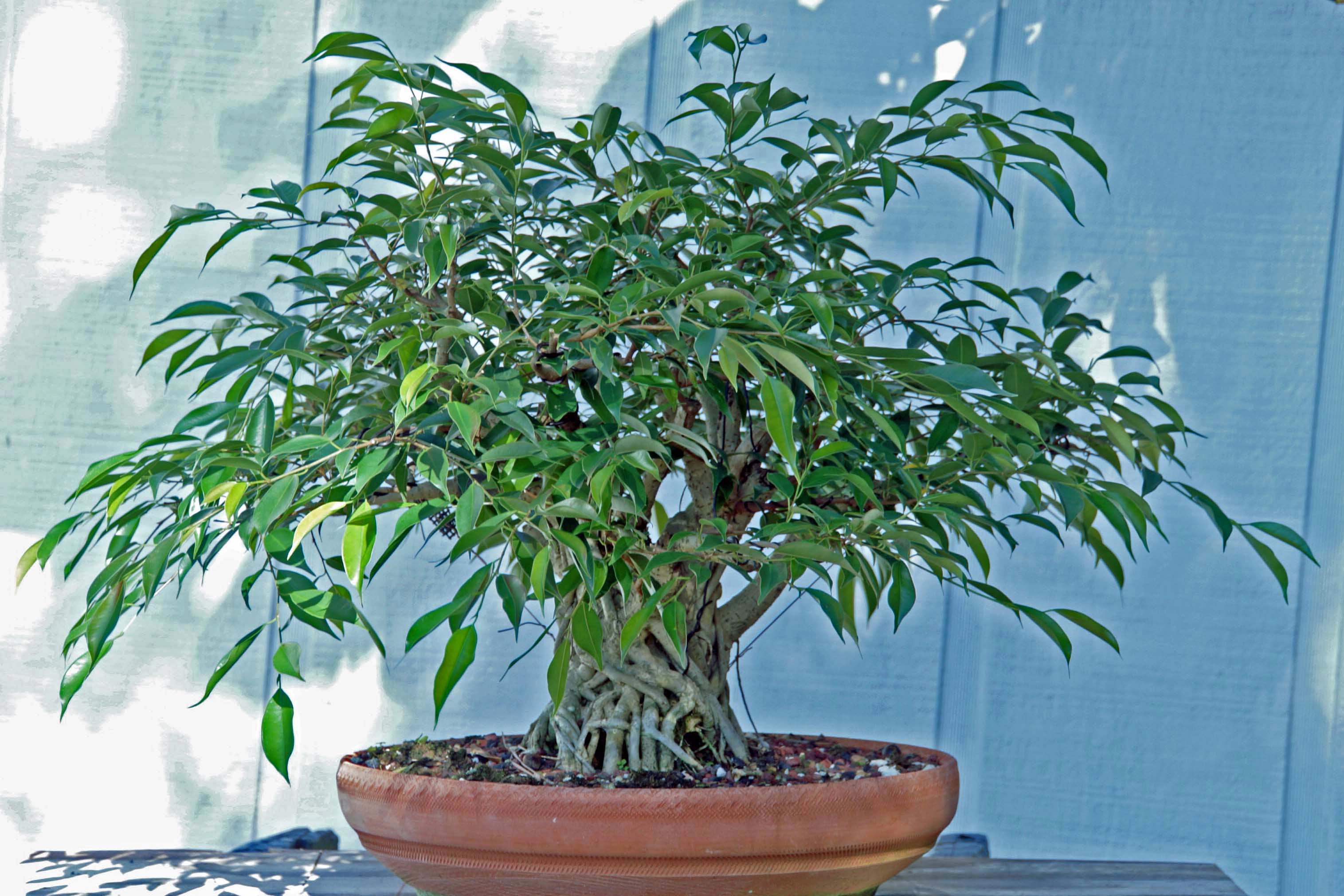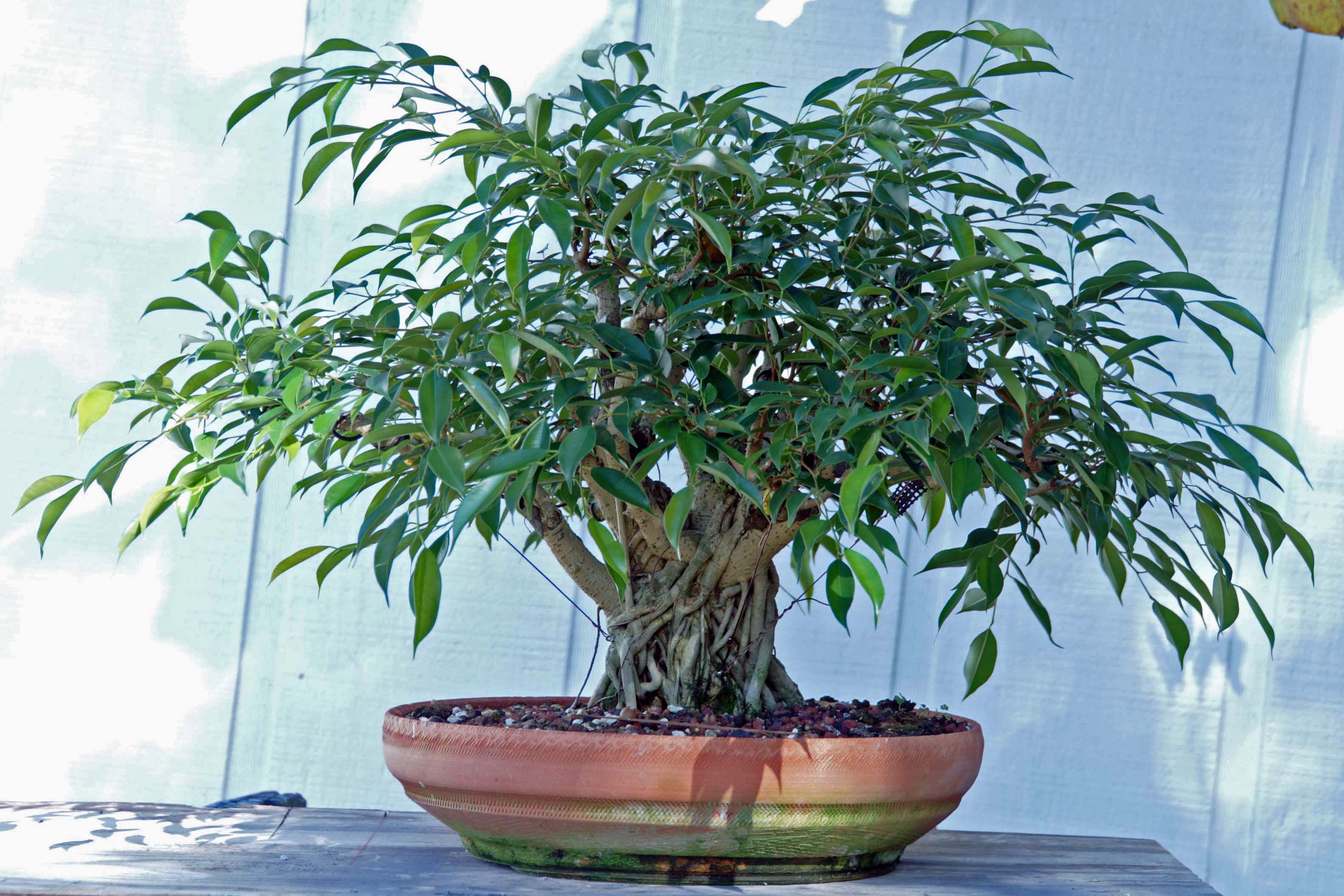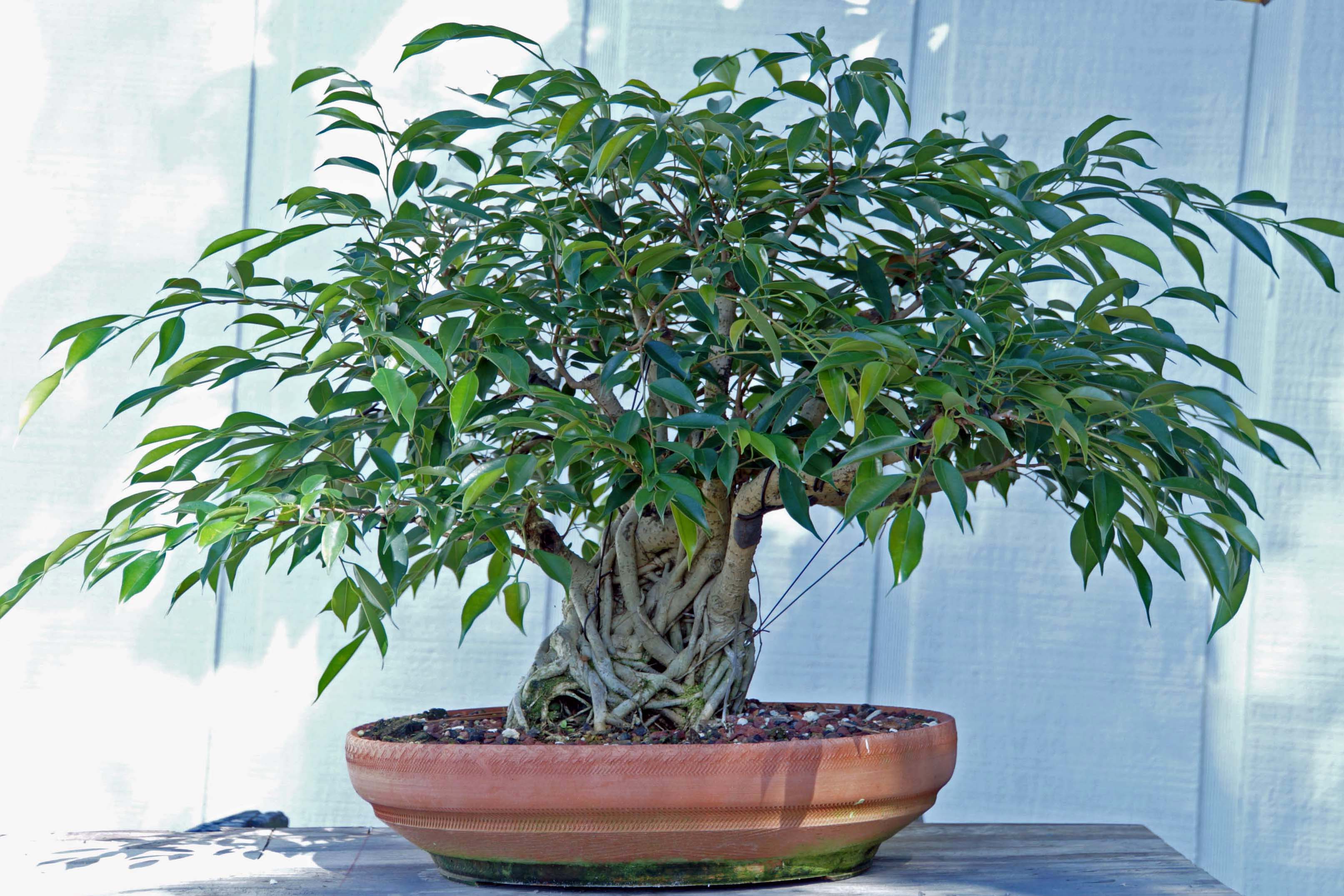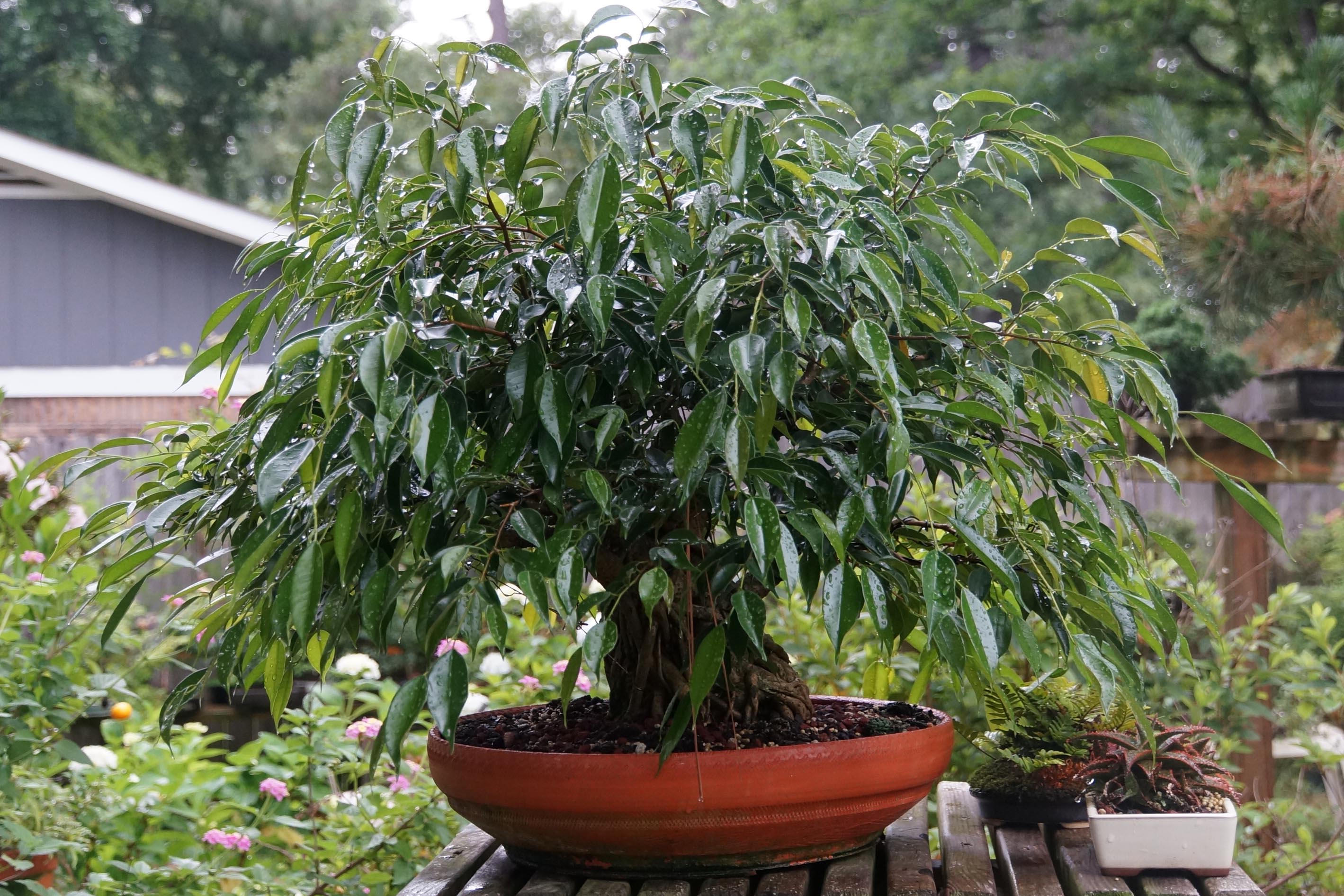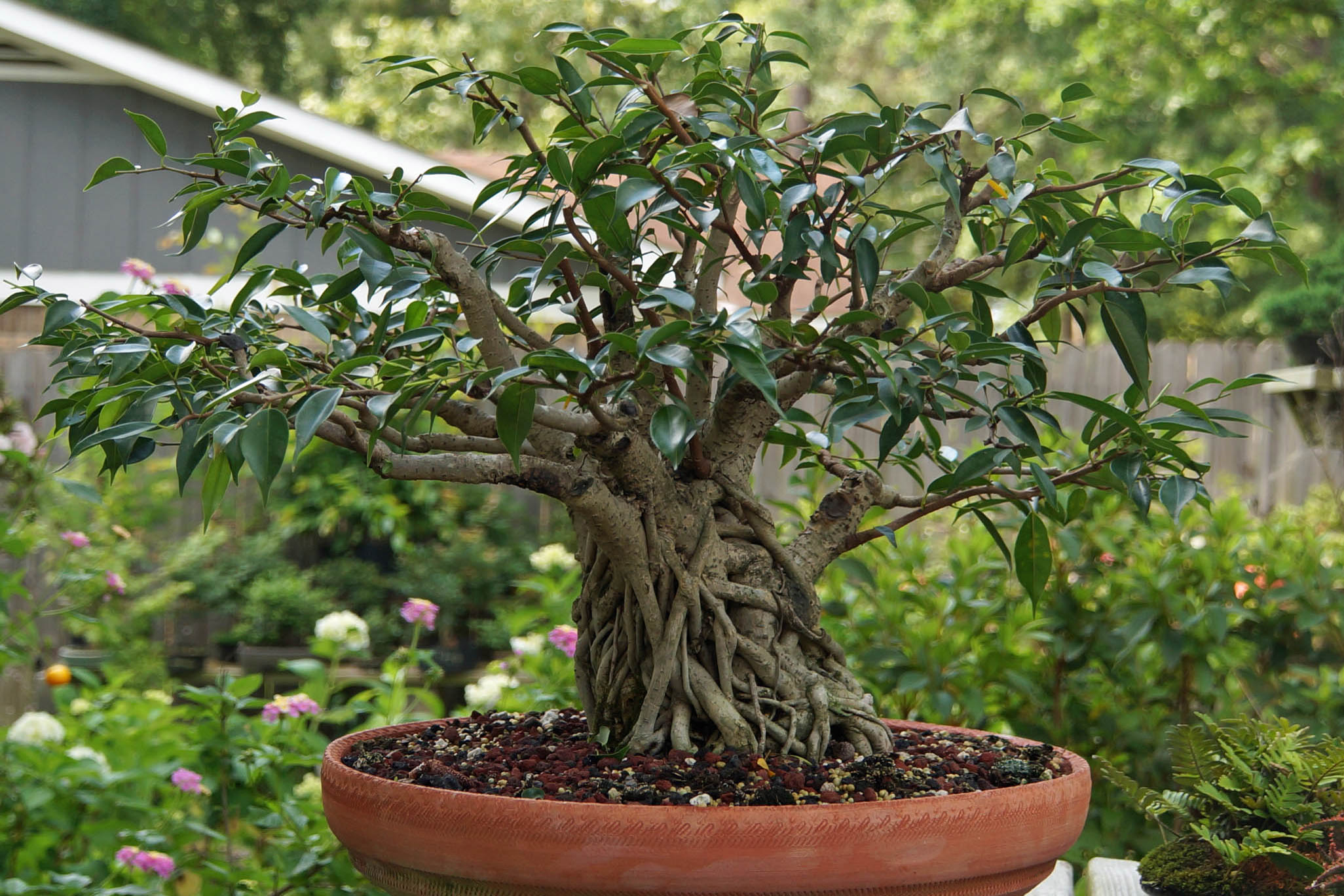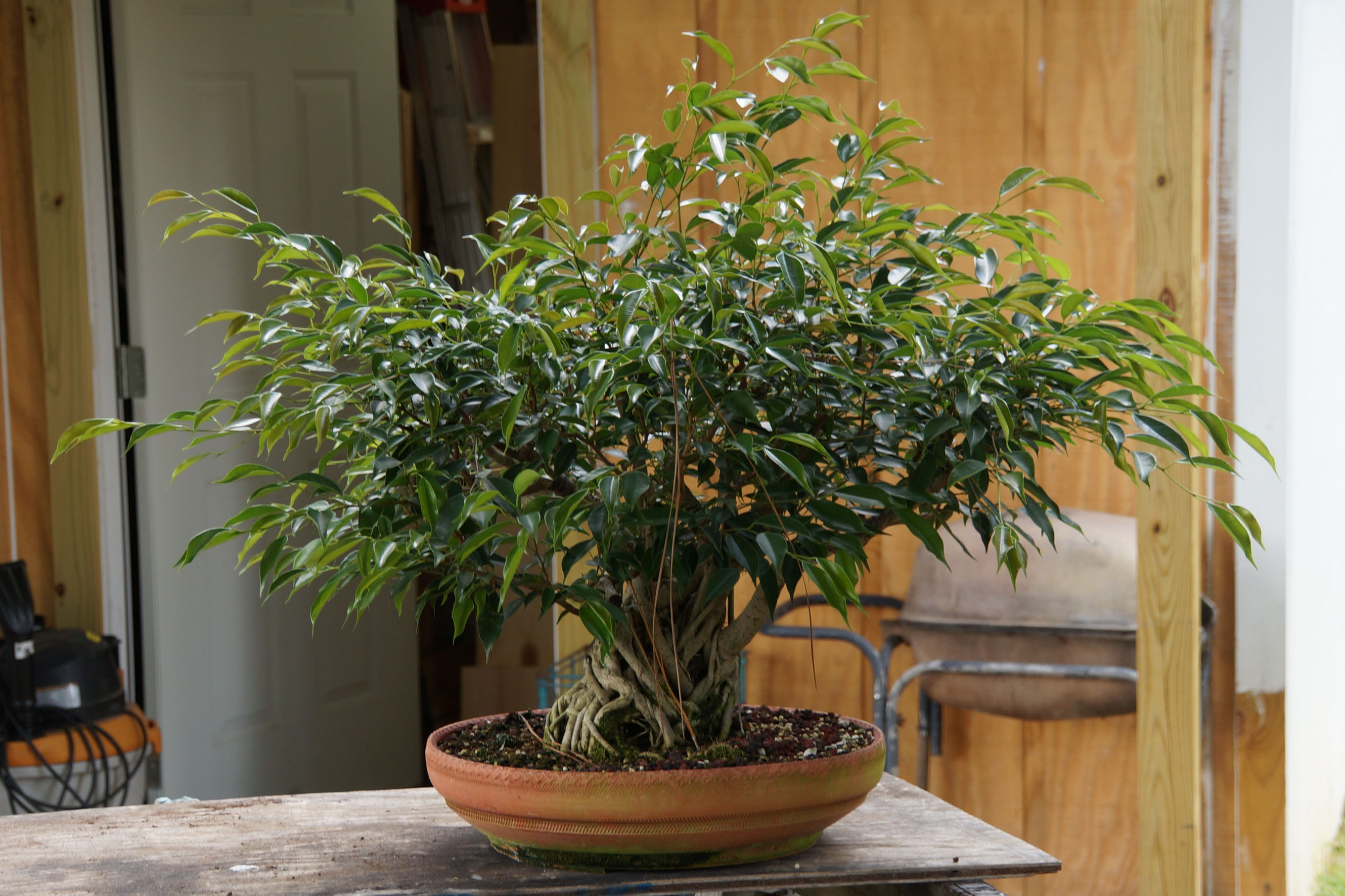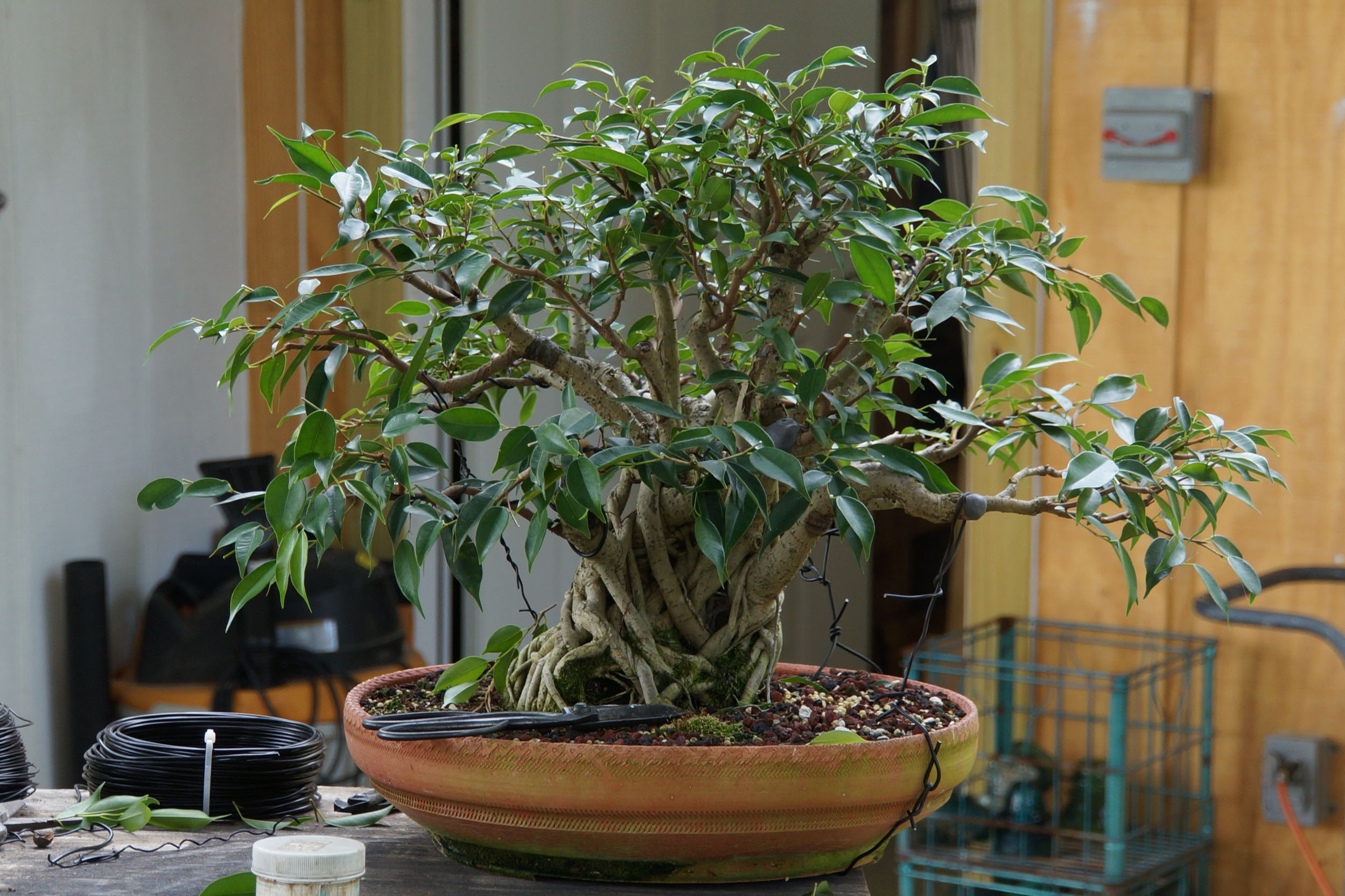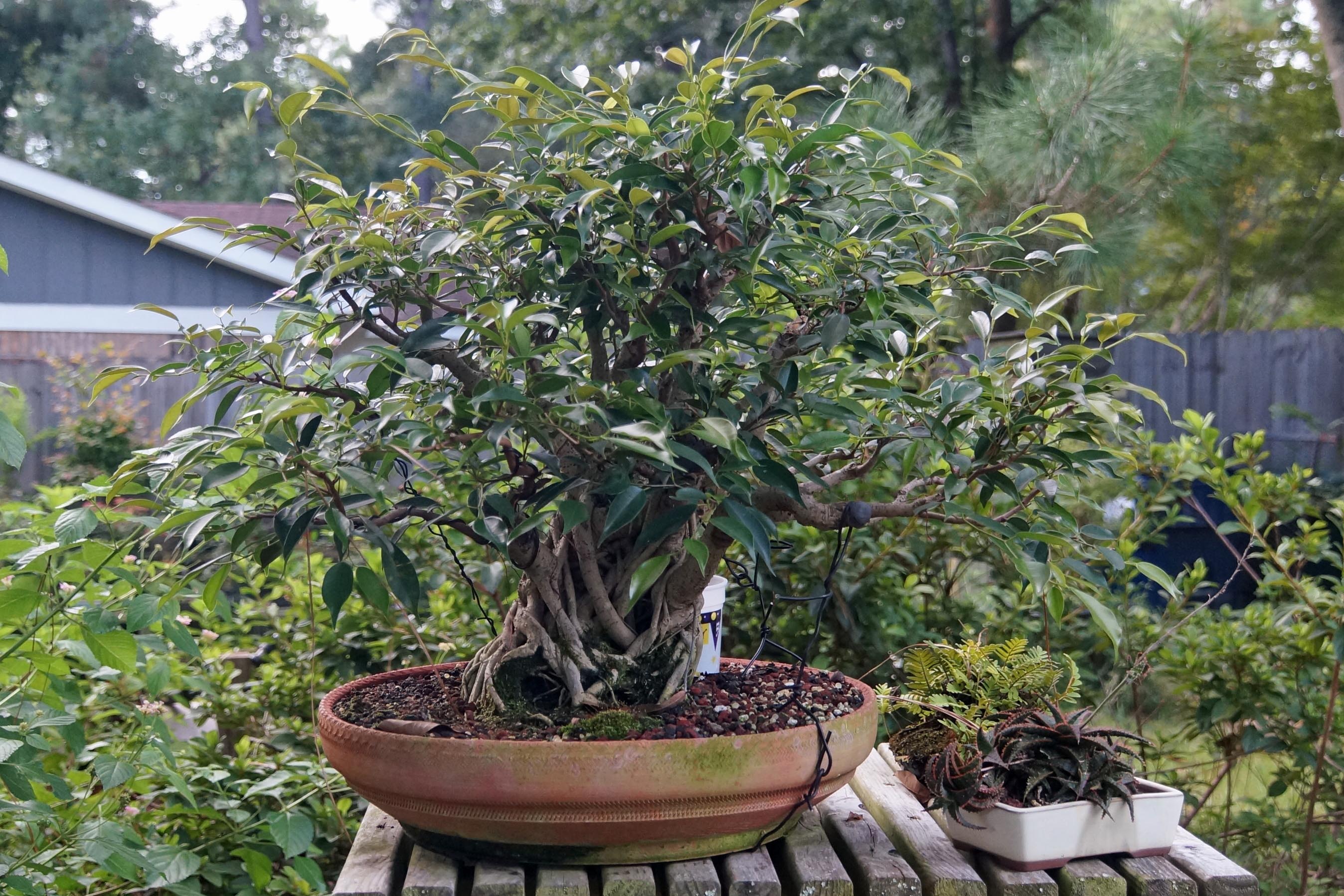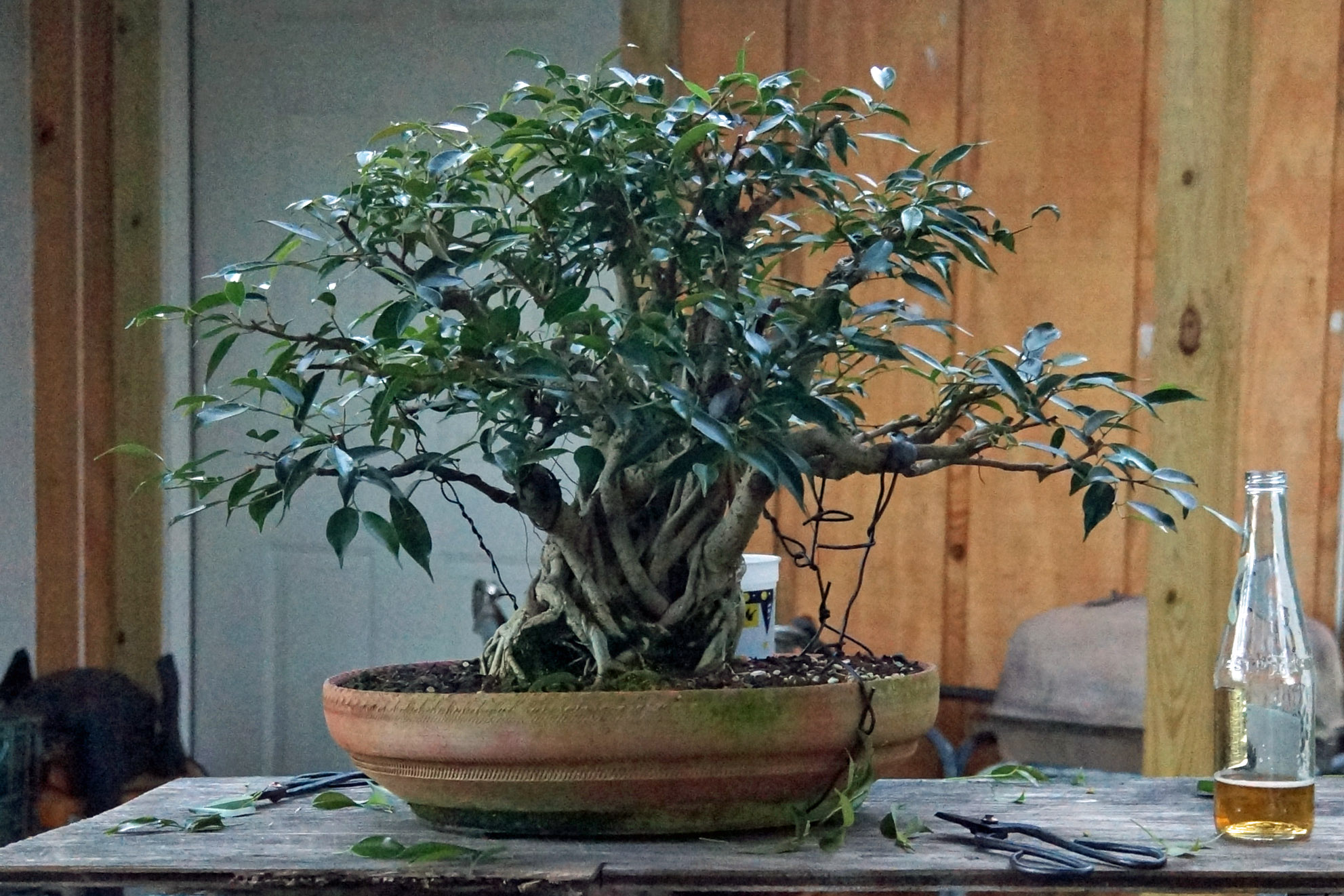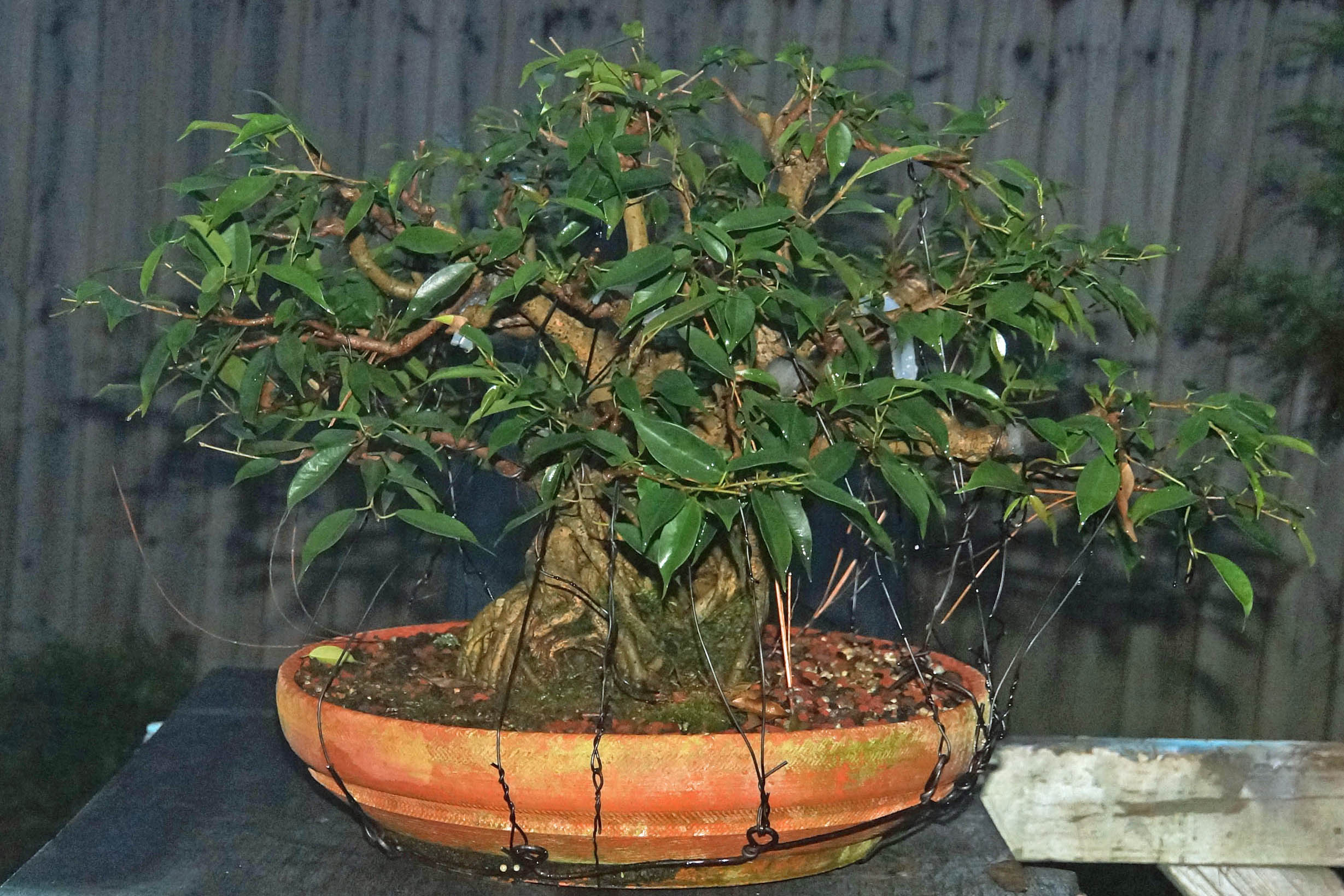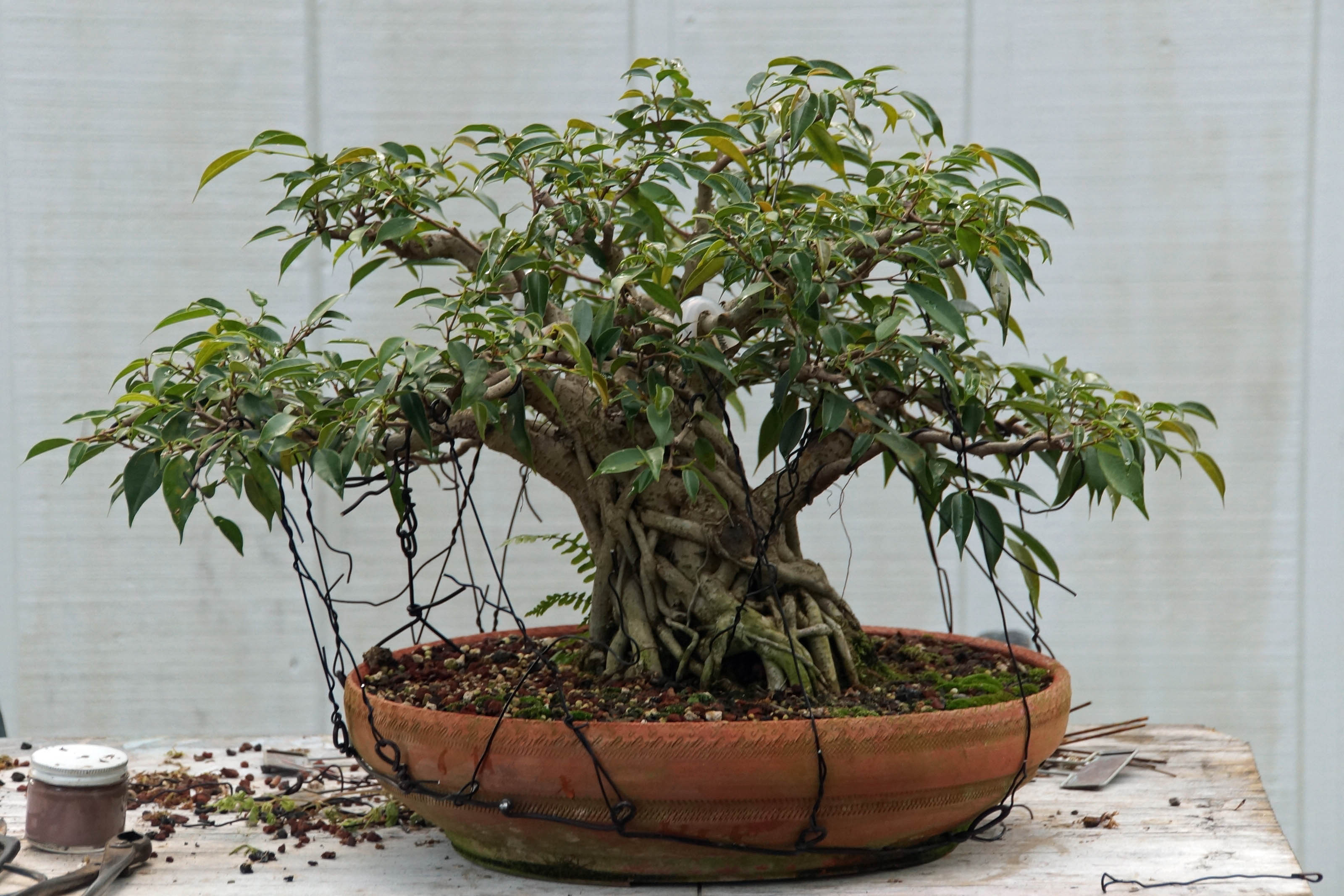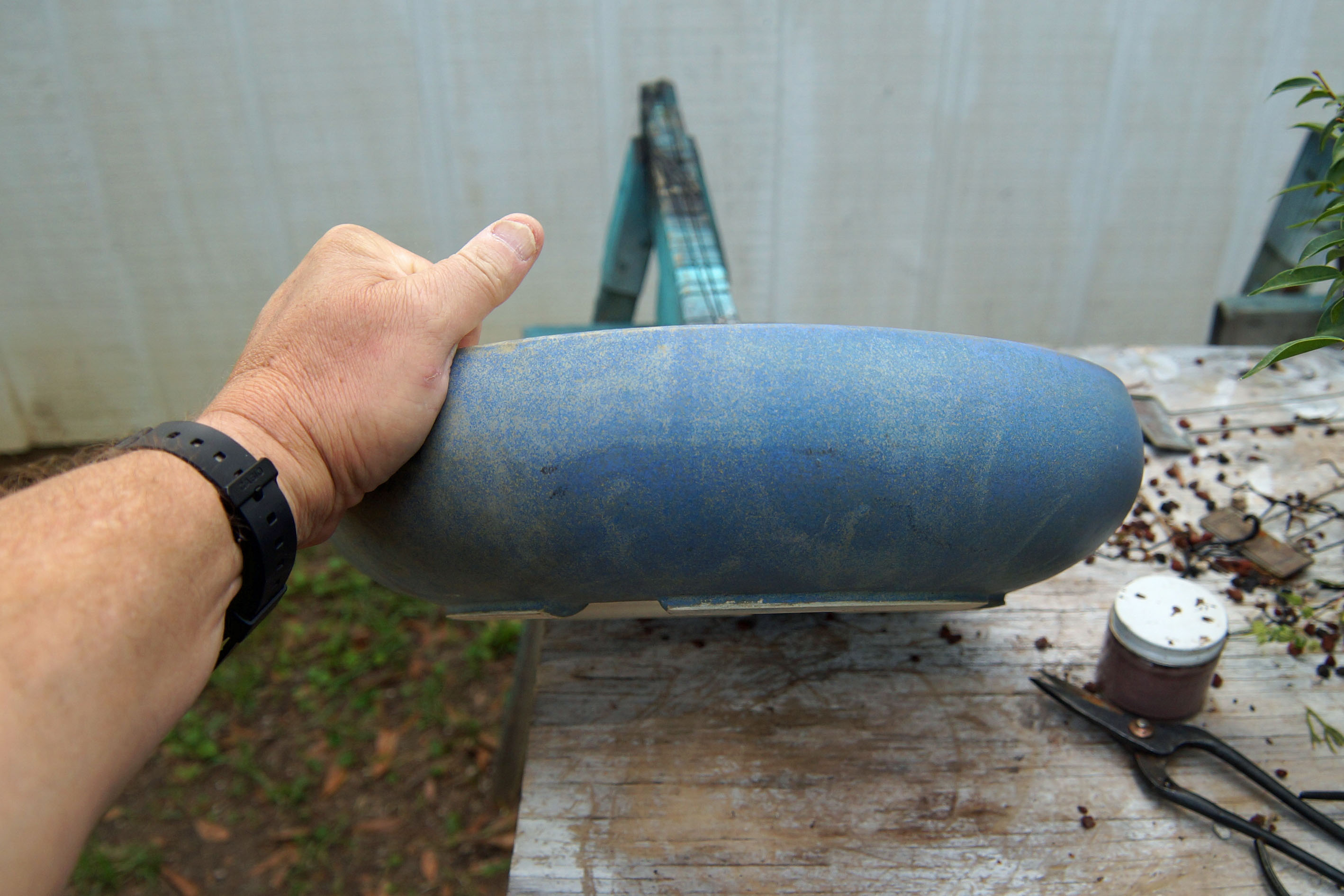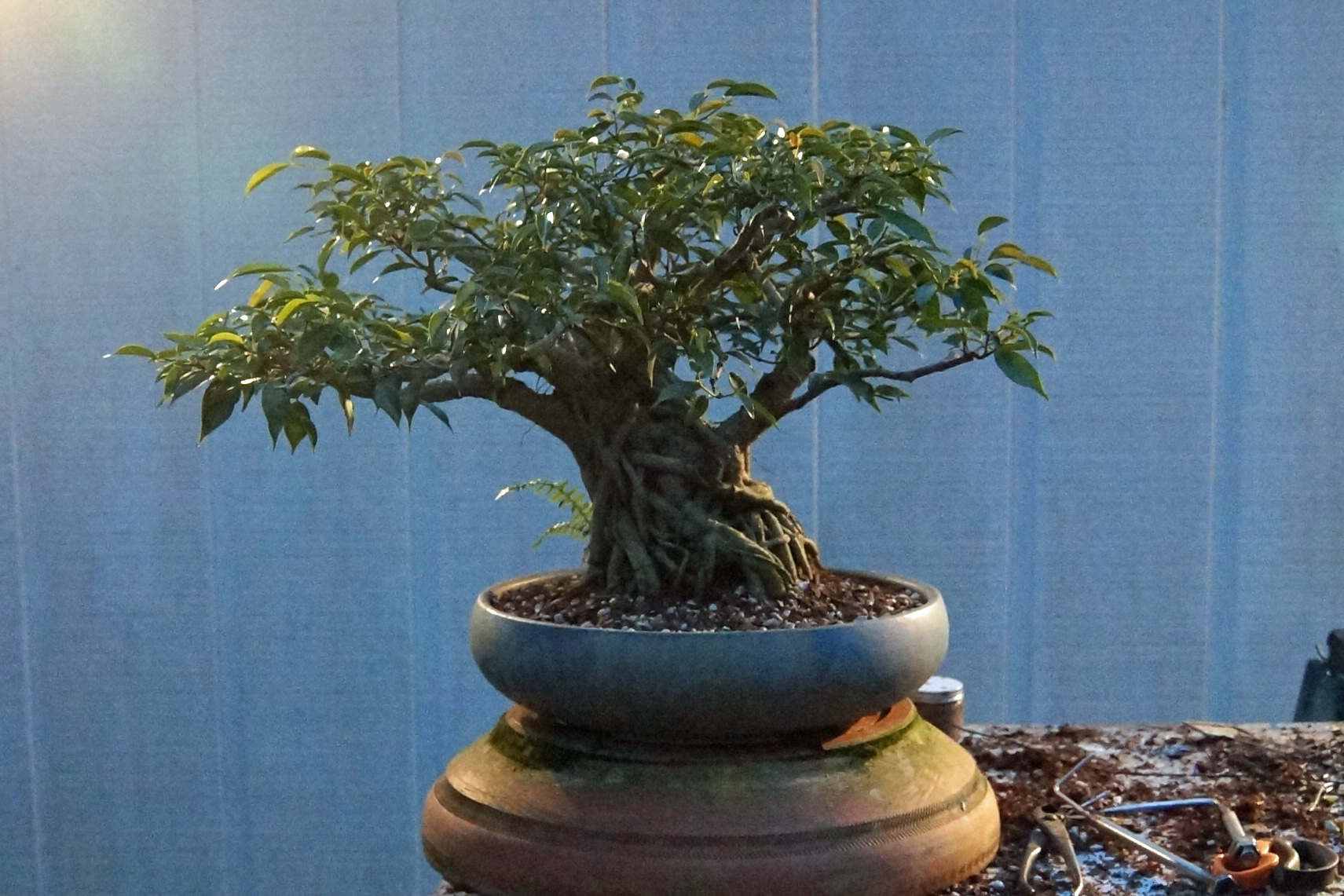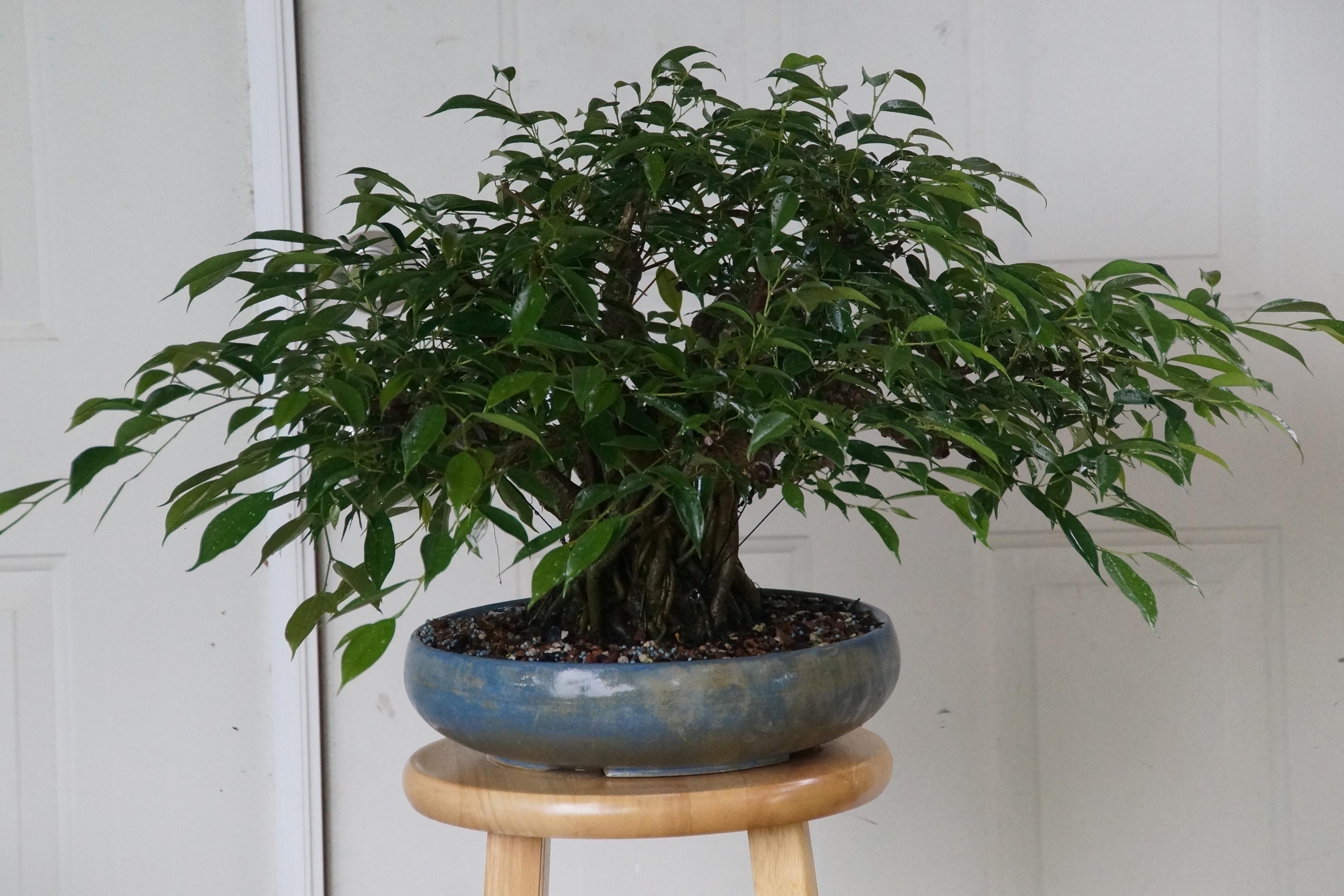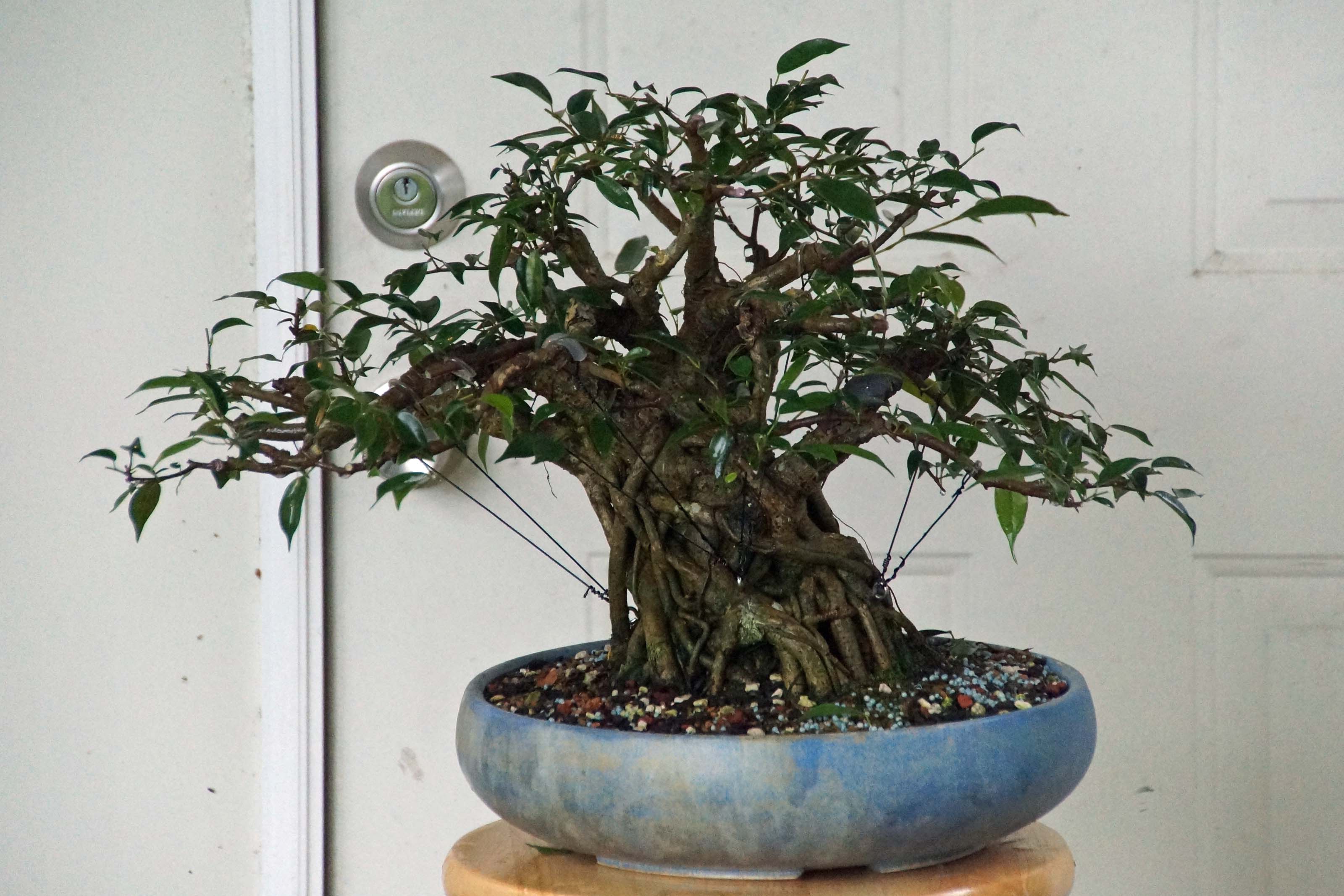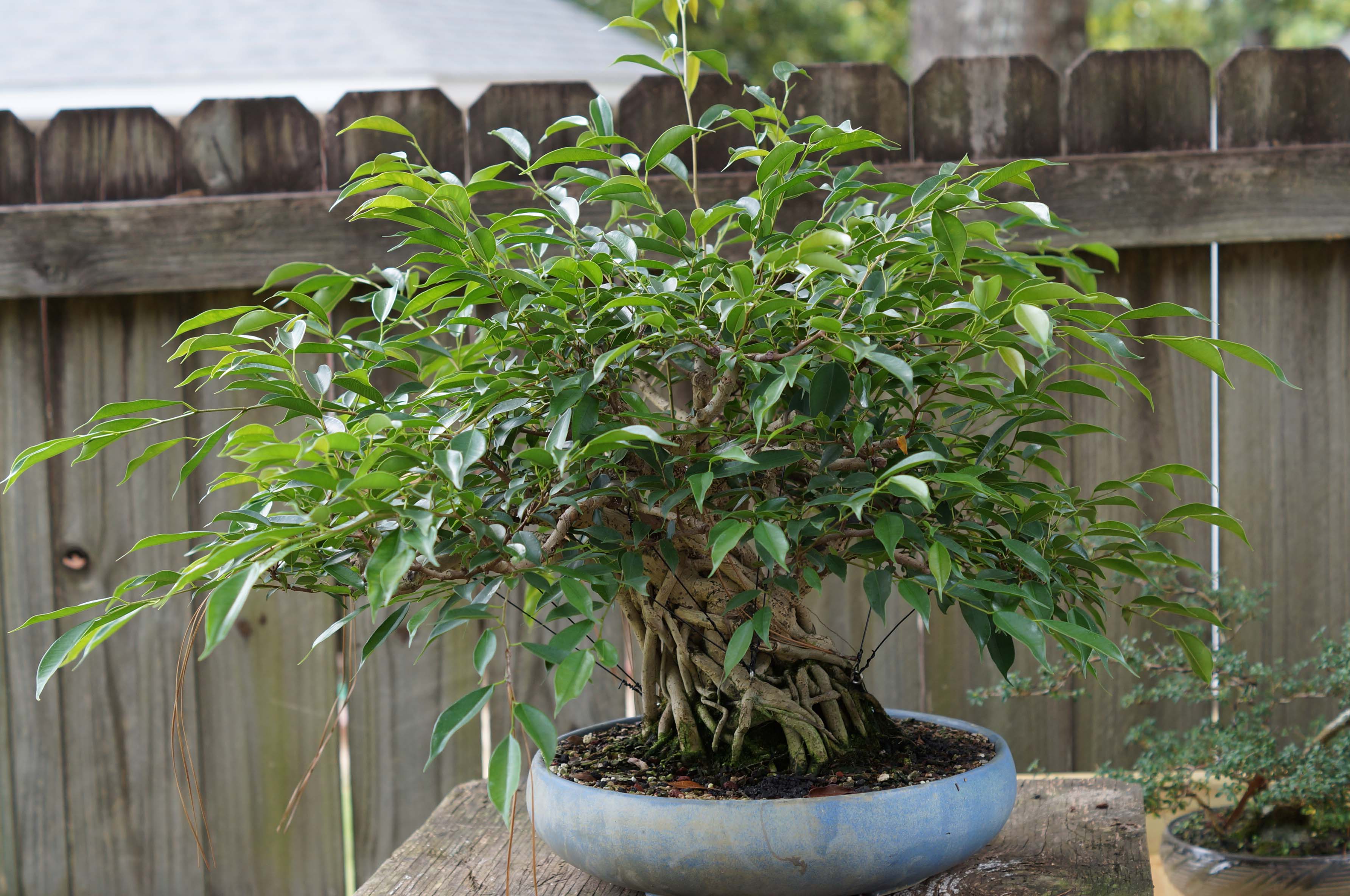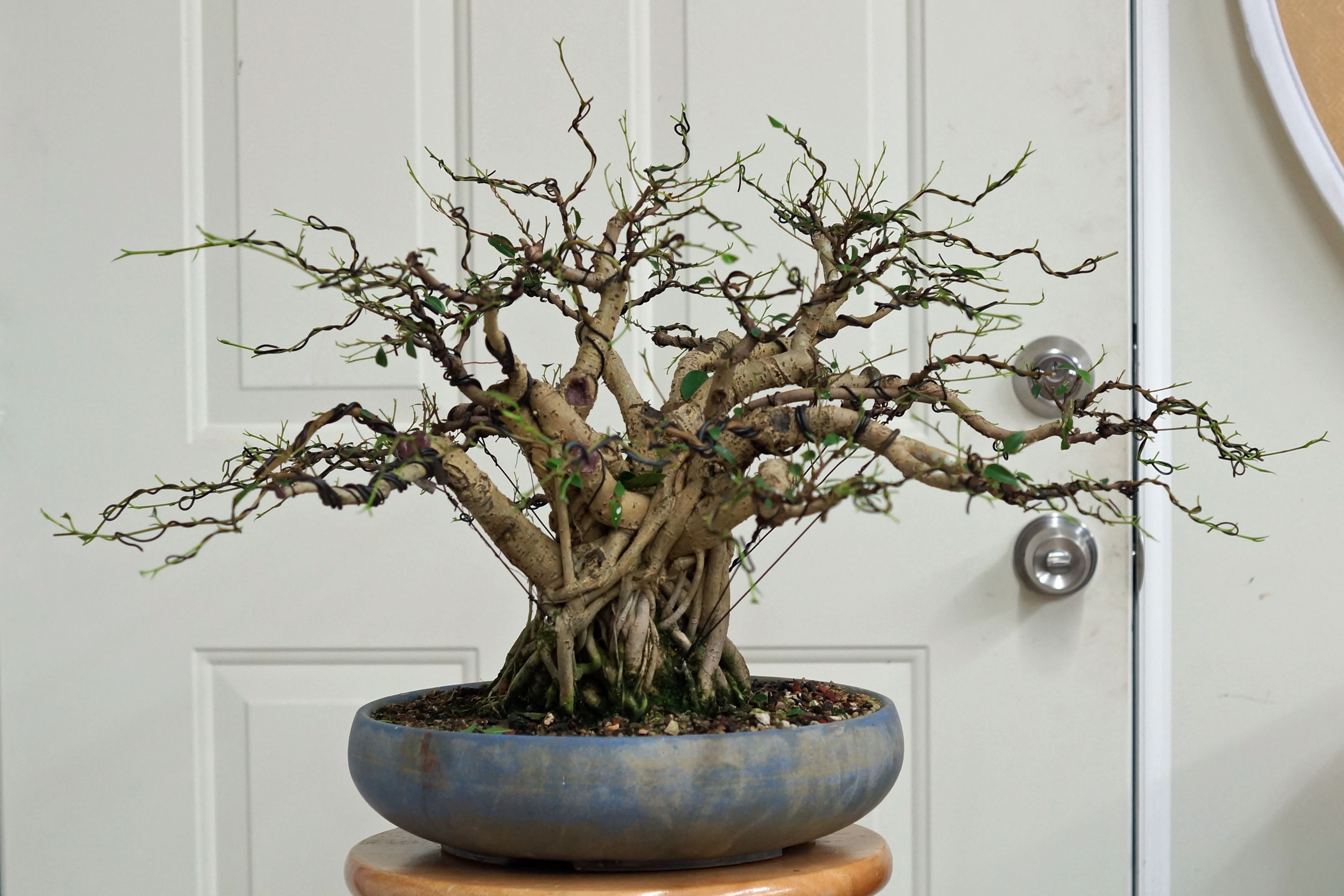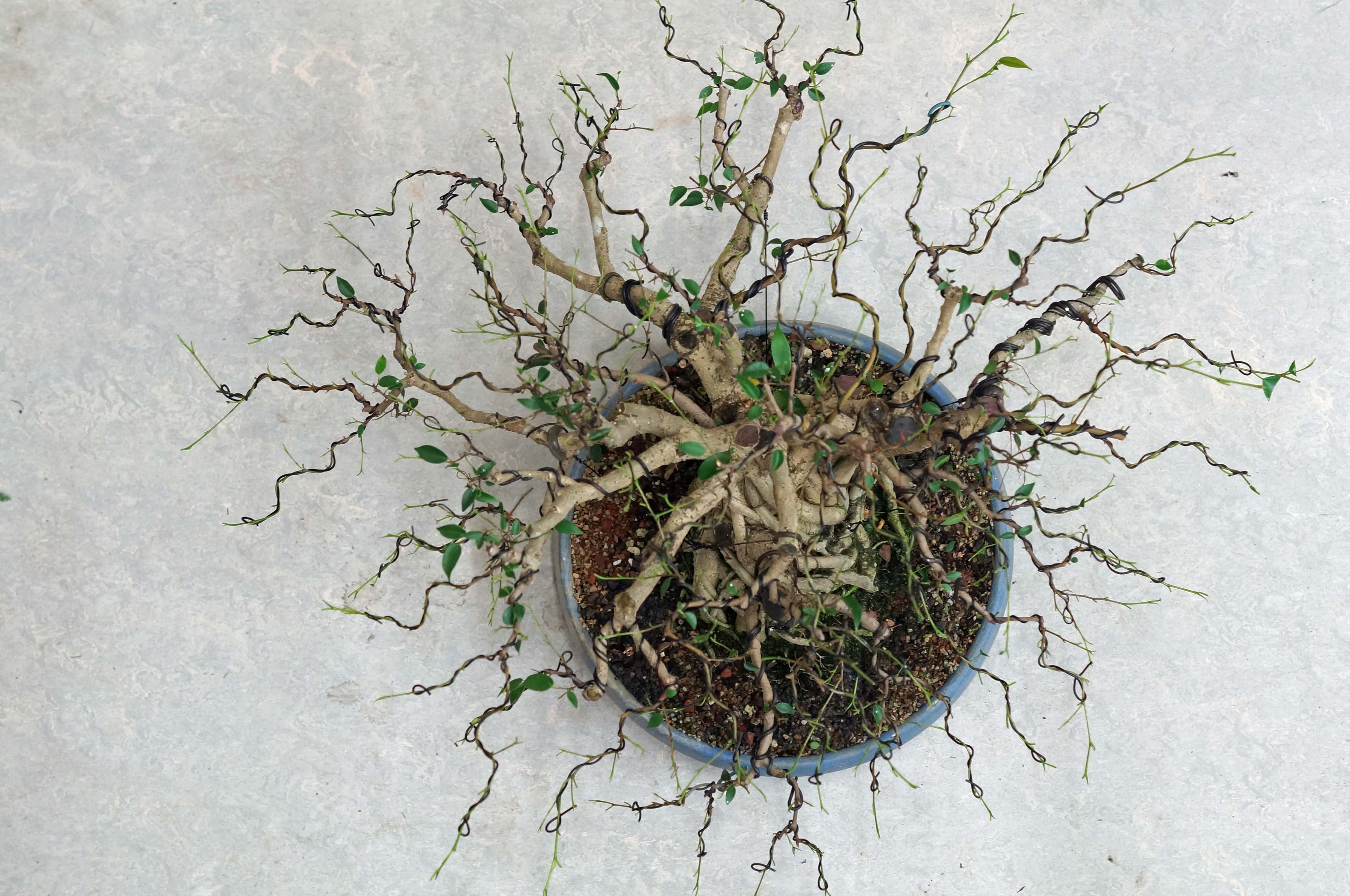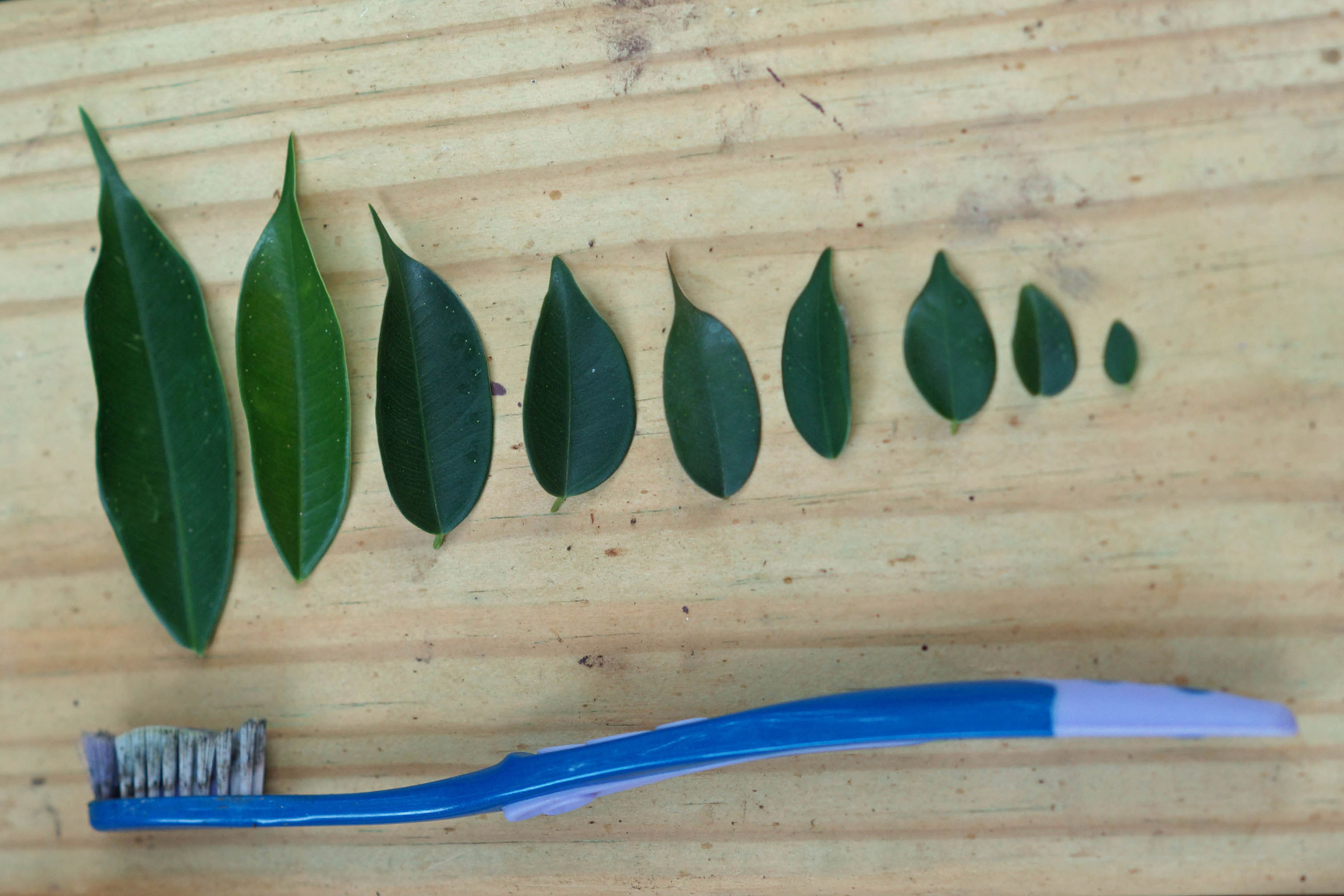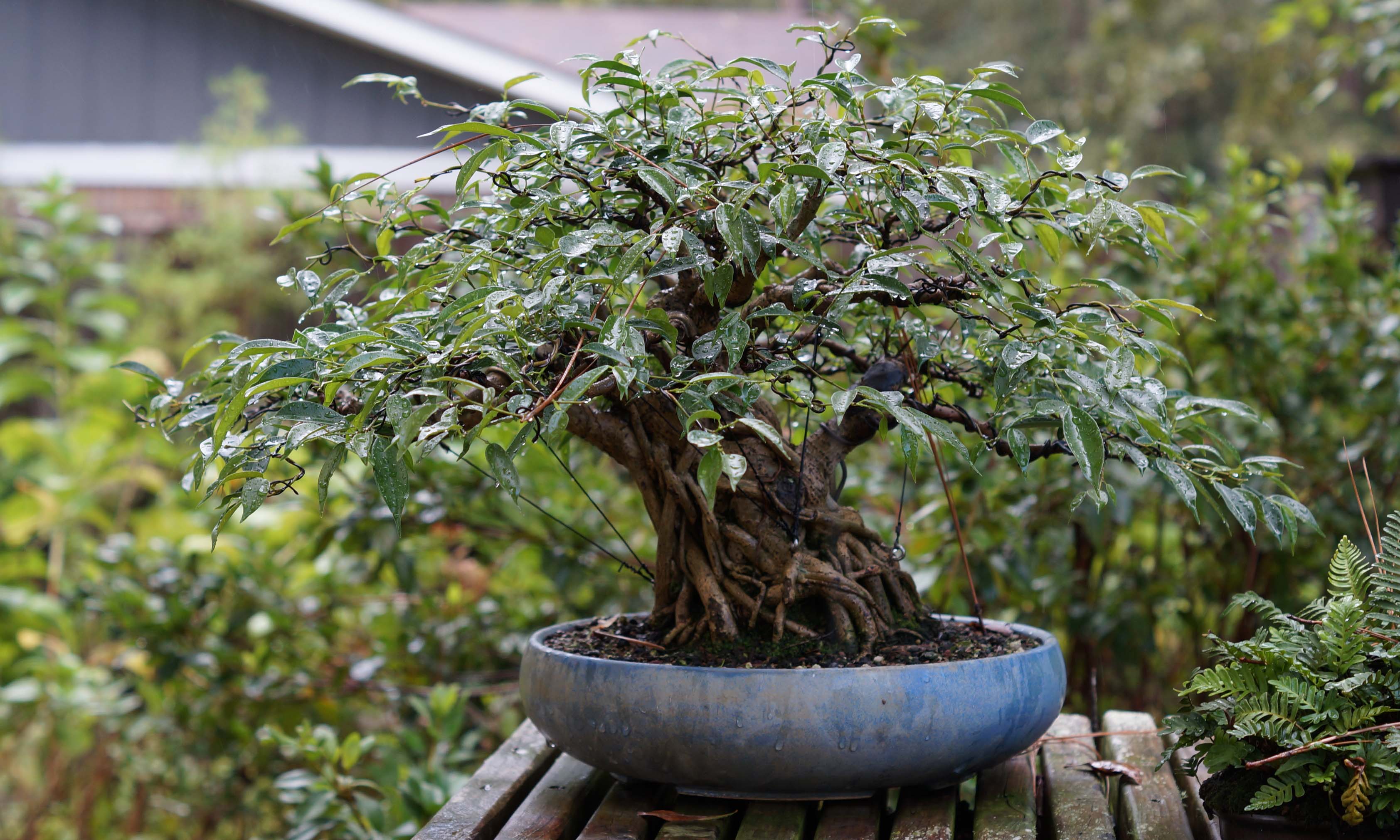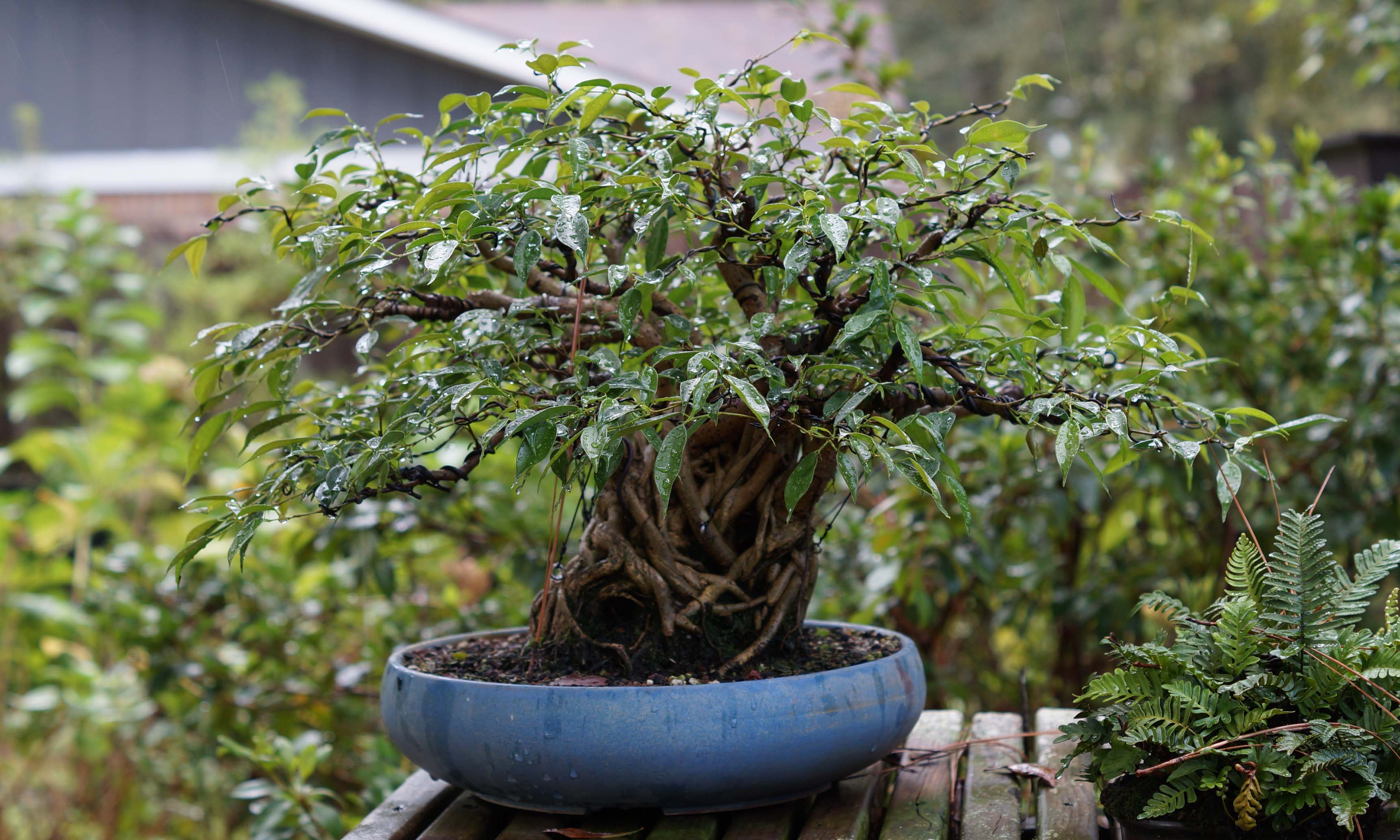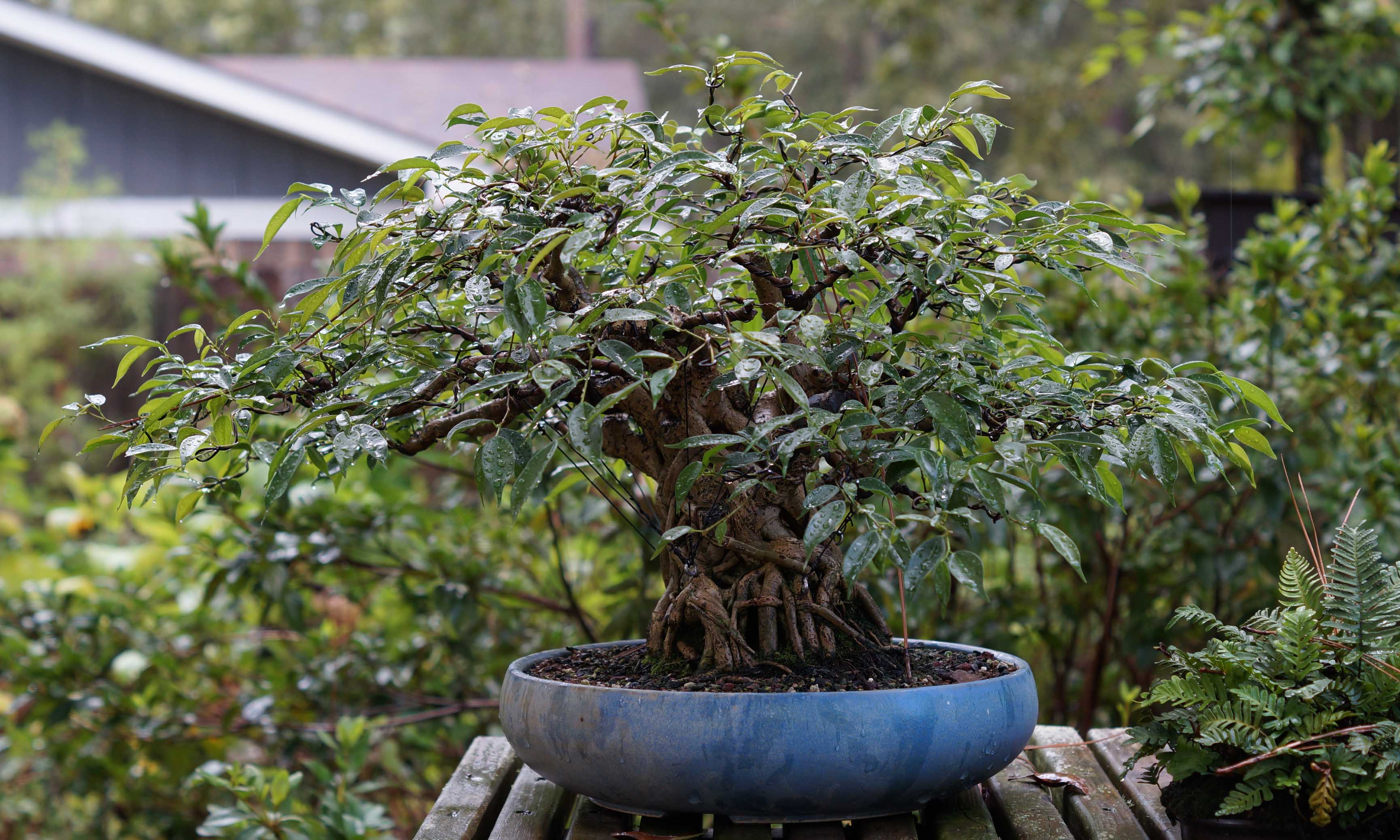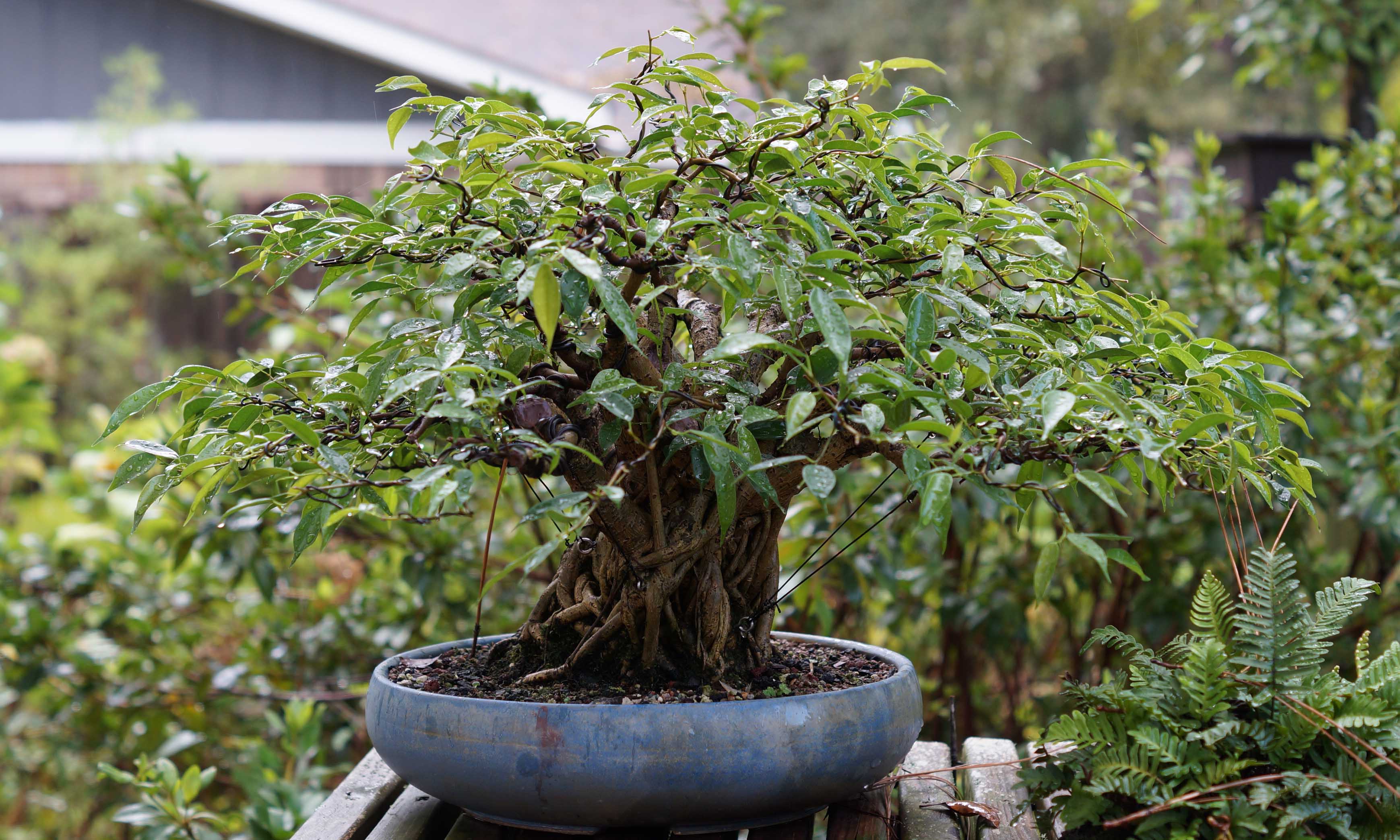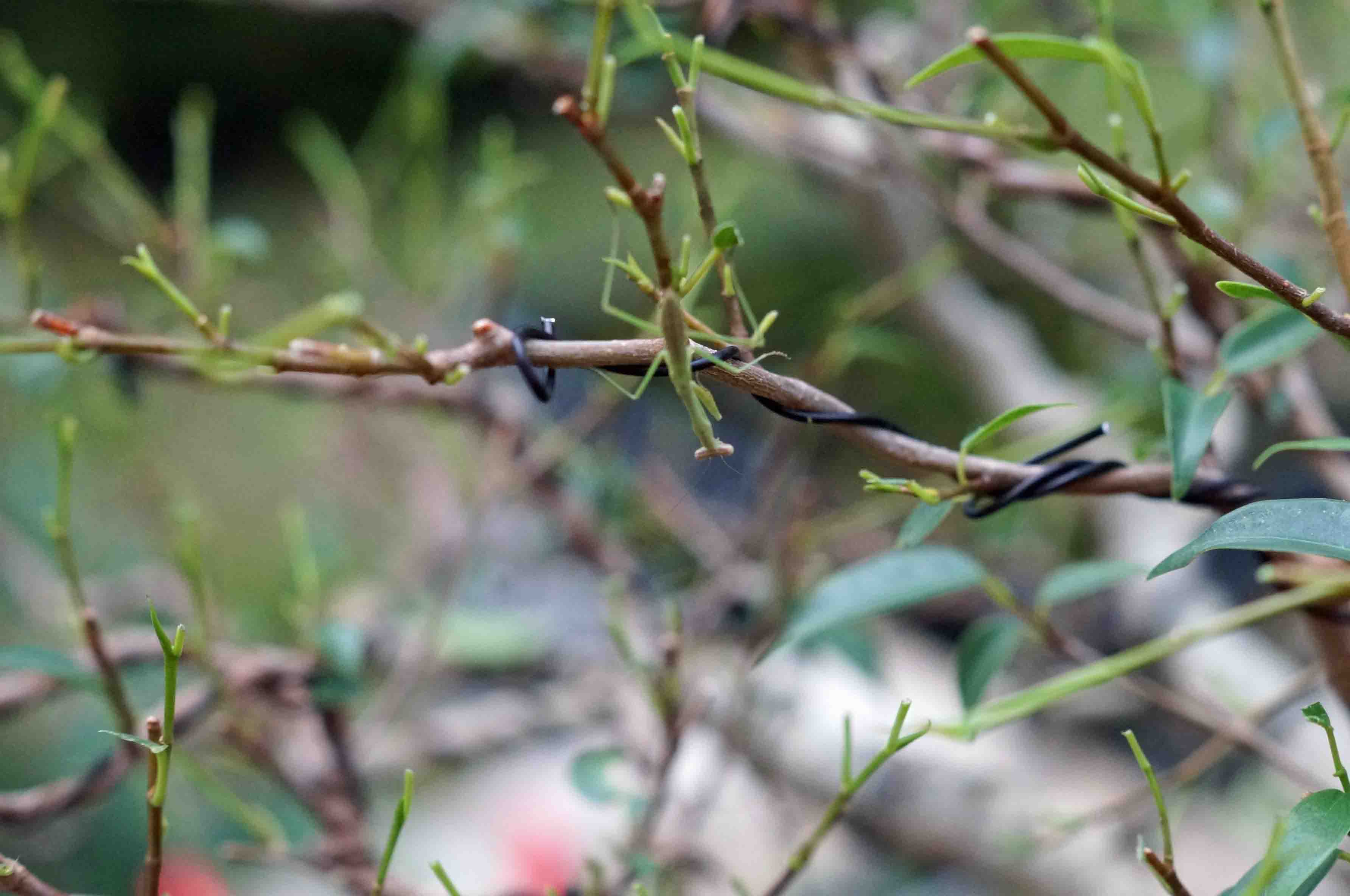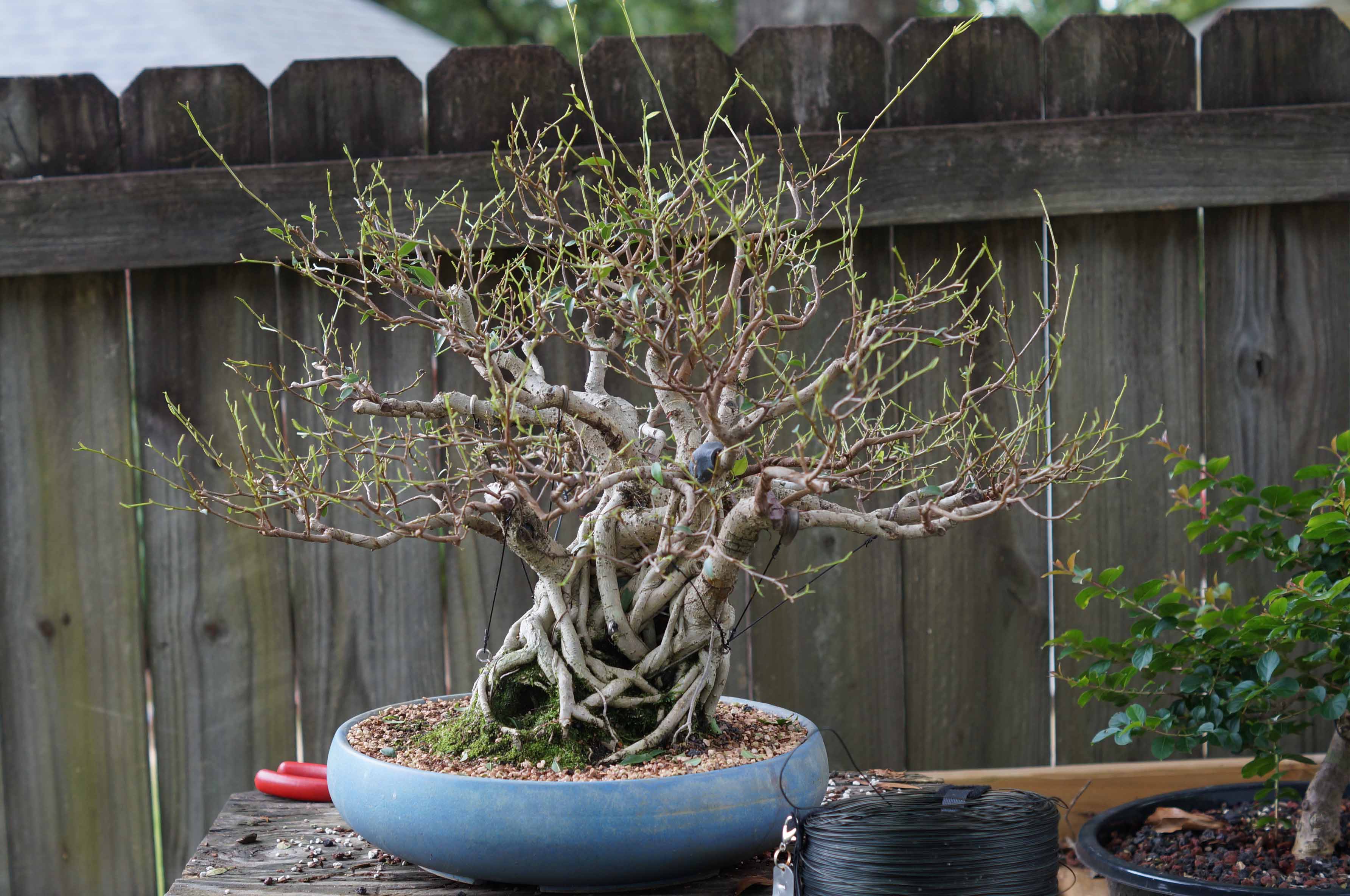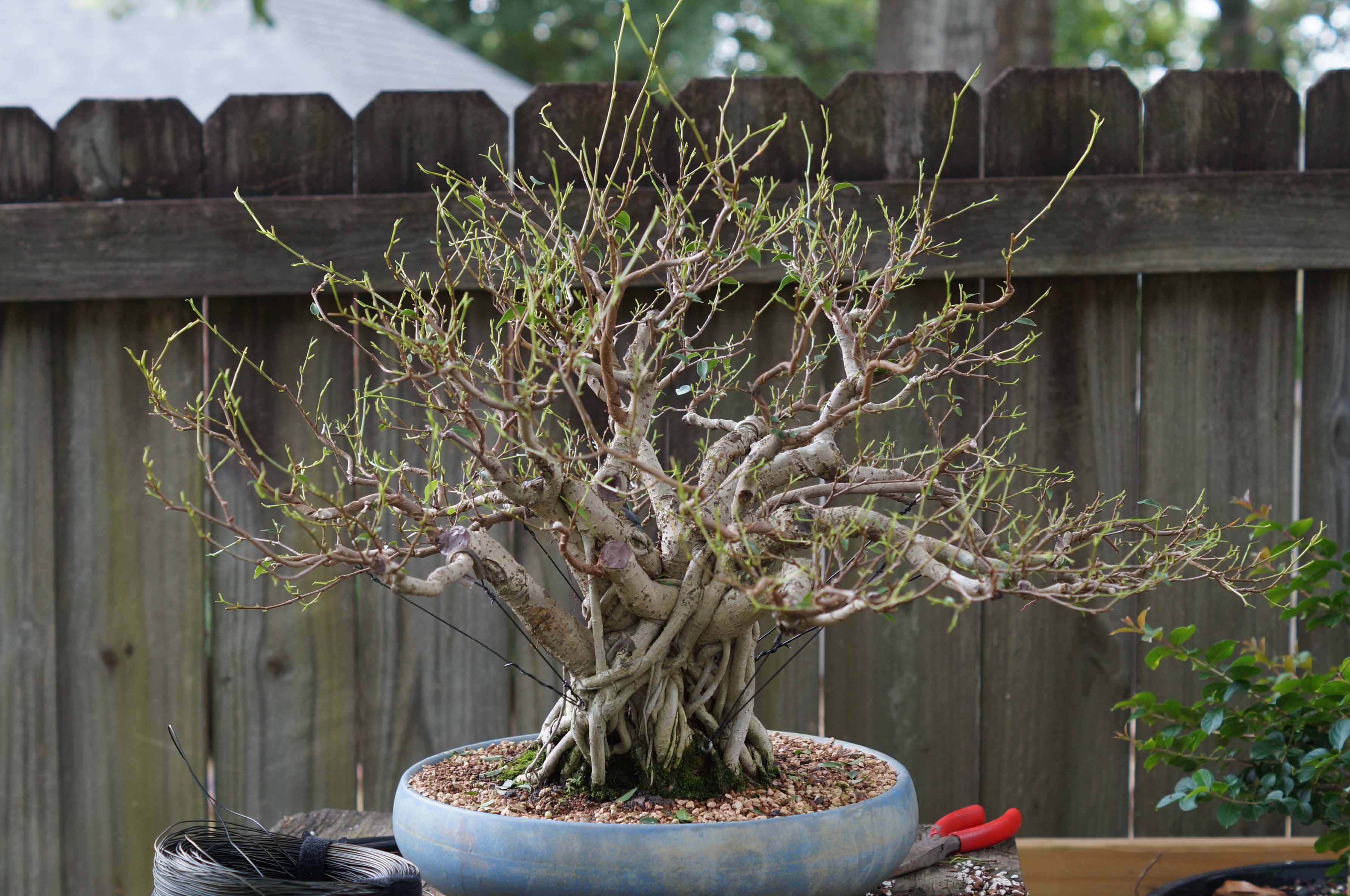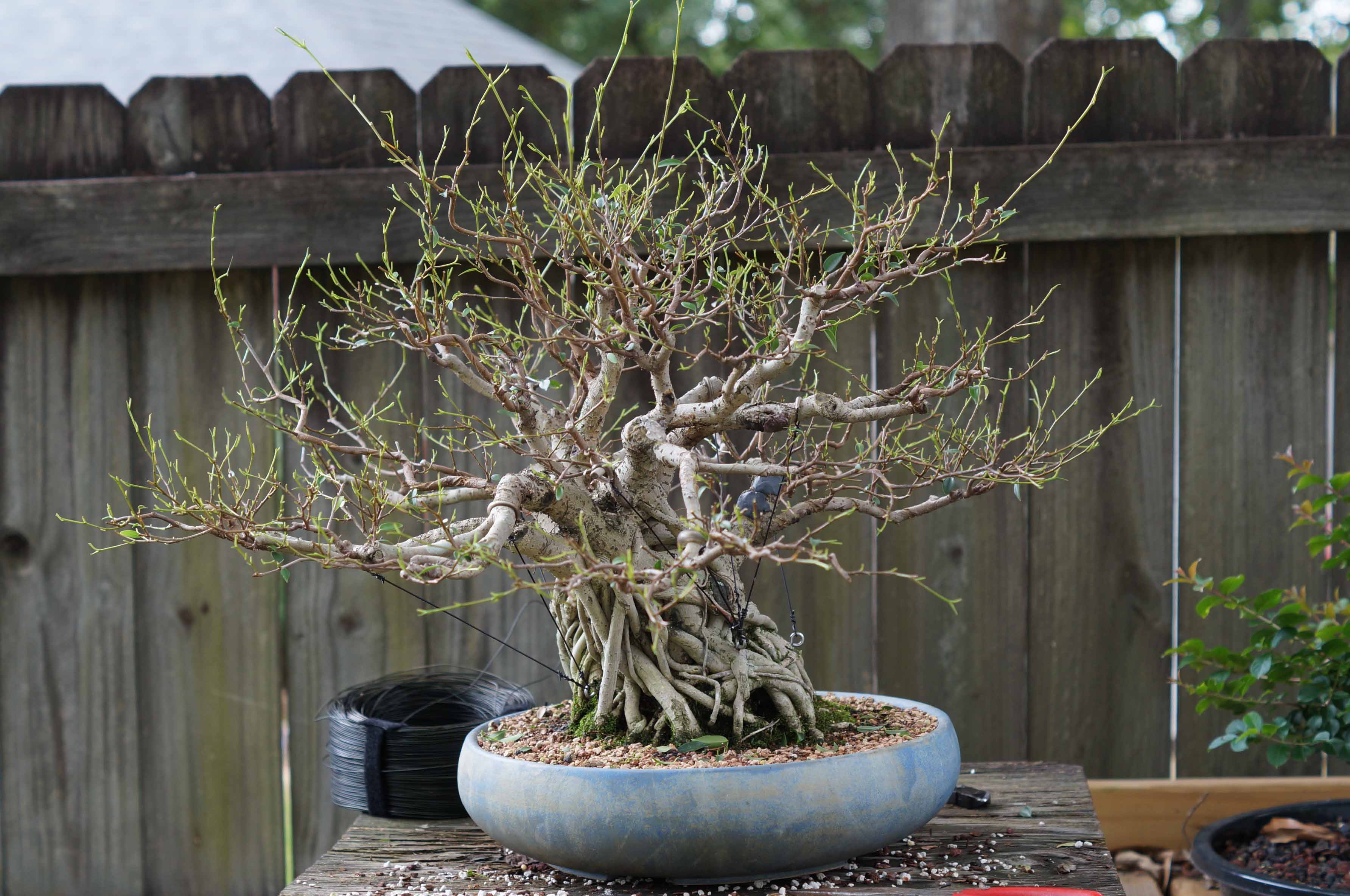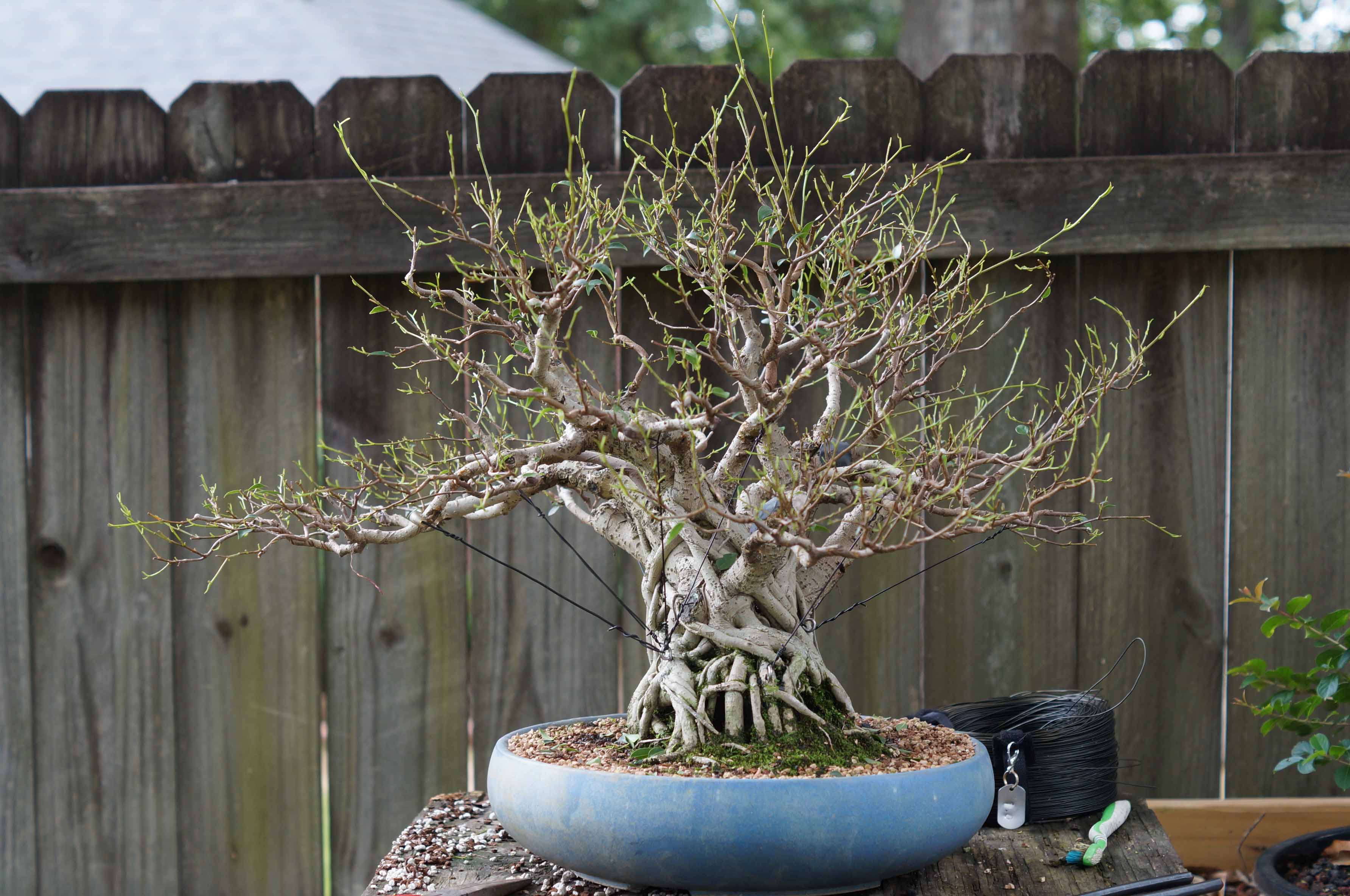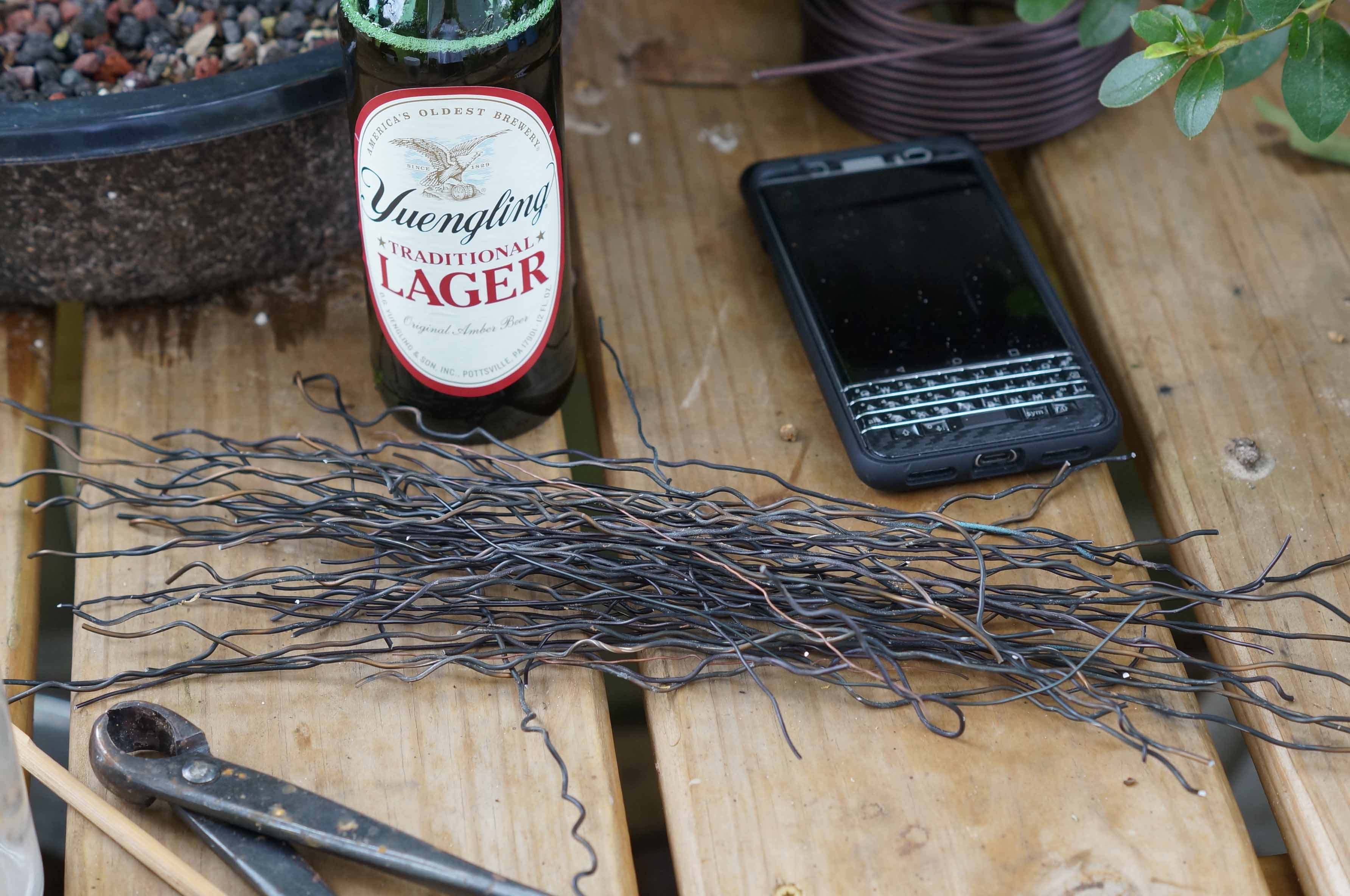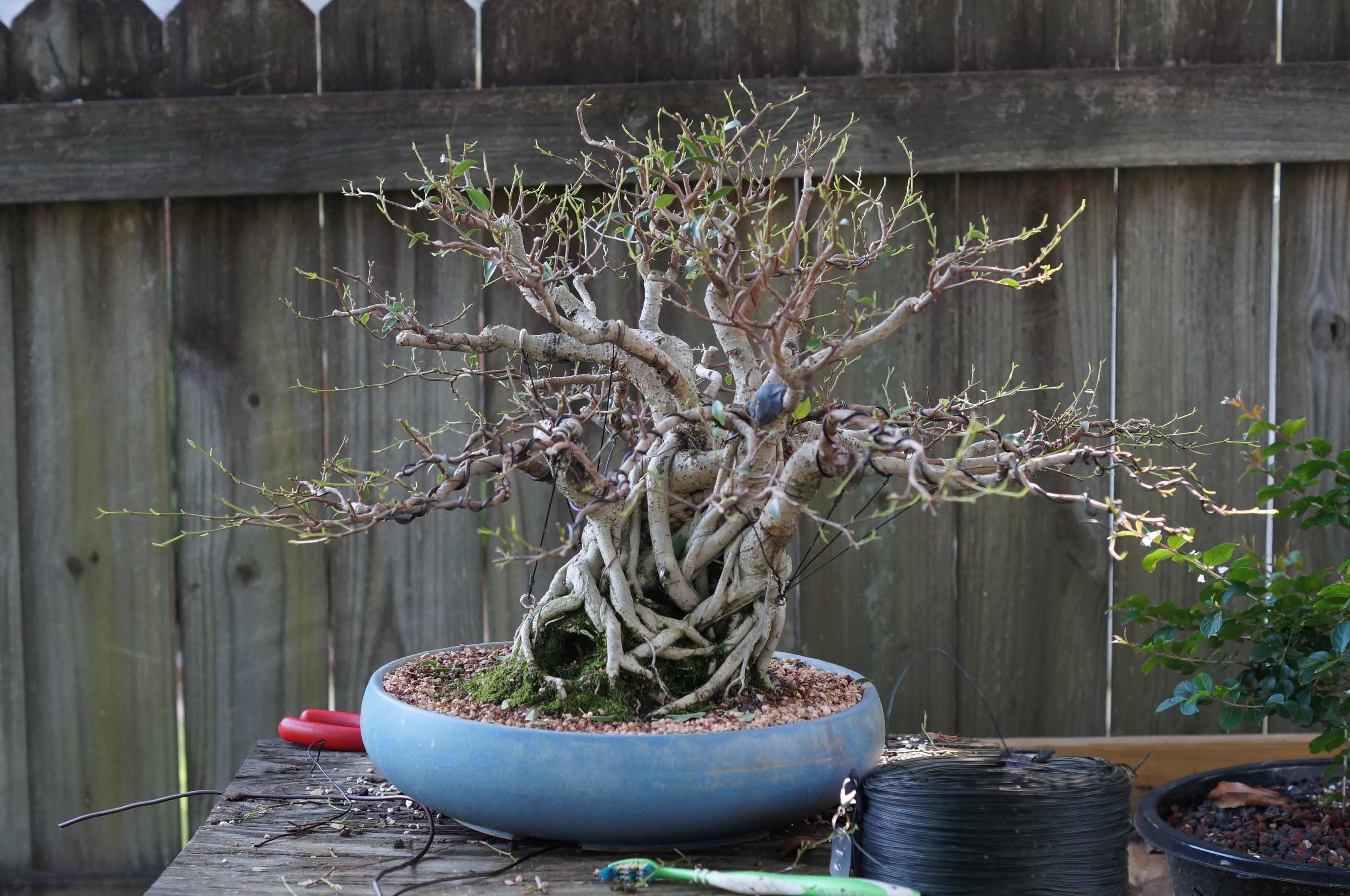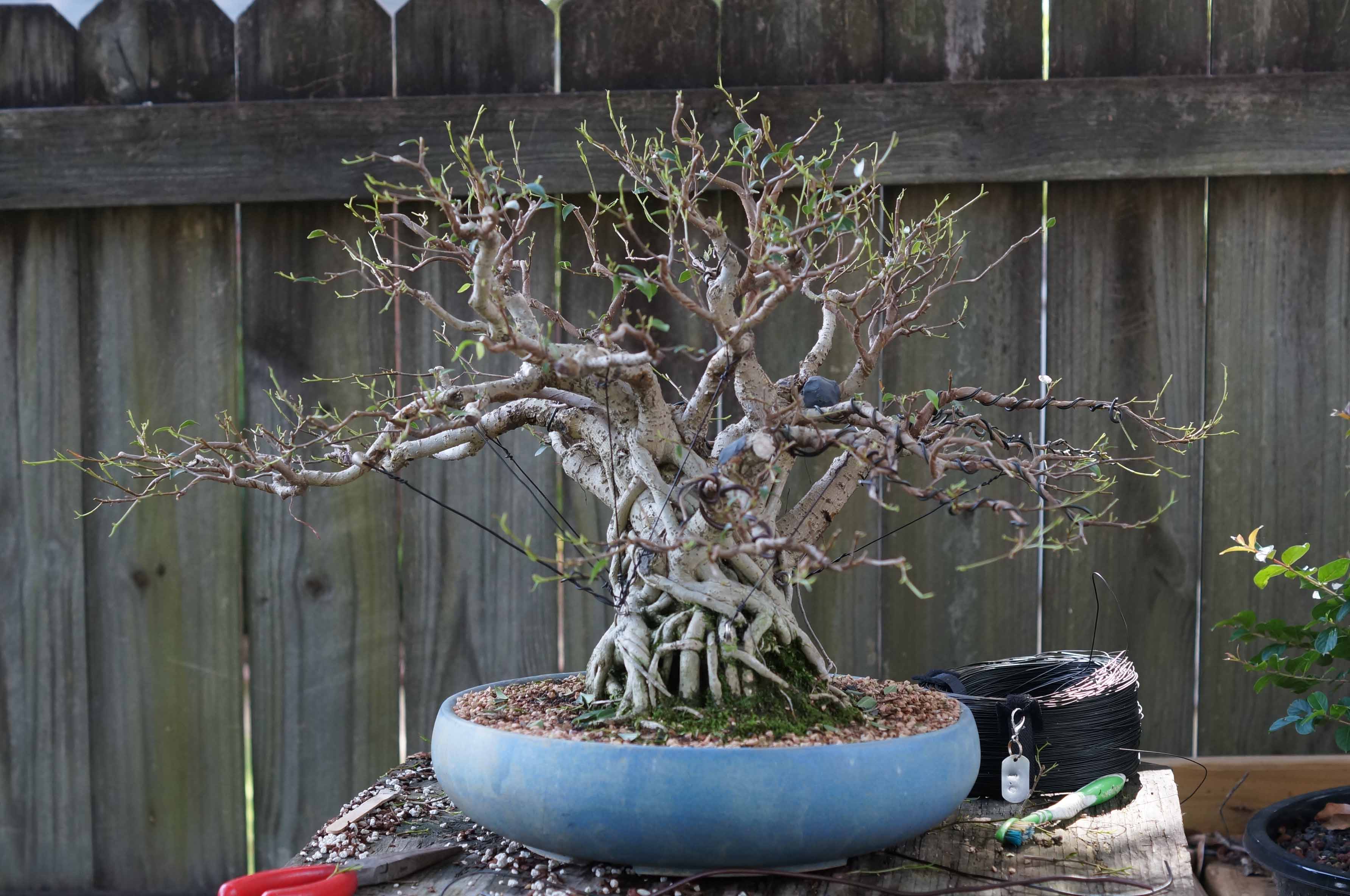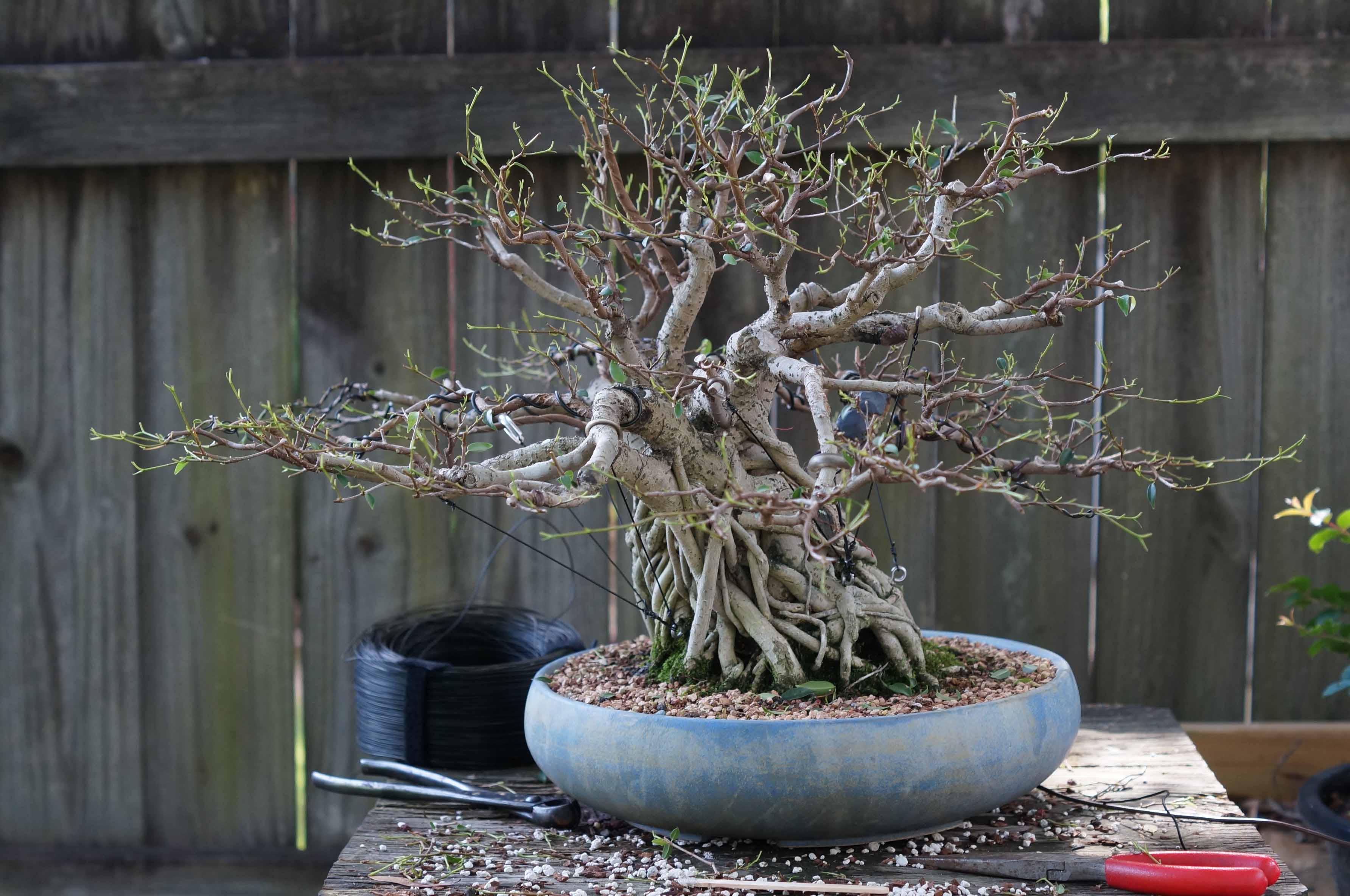Ficus Benjamina
ficus benjamina exotica
My dad gave me this tree in February of 2015. He had purchased it in the Spring of 2002 as an almost dead “mallsai” from a local store. During the thirteen years that he had it, it went through many different changes, several workshops, and different pots. One dramatic change was to the trunk, dad created a massive tangle of roots to produce a nice heavy trunk. He accomplished this by surrounding the trunk with plastic tubs filled with bonsai soil. This used the trees inclination to produce aerial roots to thicken the trunk. Below are pictures of the tree’s history while under my Dad’s care.
Late Spring 2002
It had fill in nicely by ladsjflasdjfladskfladskfjadslkfjdaslkfjdslkfjdsflksdajflkdsfjadslkfjsdlkf
jadsf a'foaew;f ;owef ammaaasdofa ad;afds; fa af aa;eoa fa;ejf a a a d fa ef a w w w jjjjl;jiooin
It responded well to some fertilizer, water, and some sun. It had filled in nicely by Fall 2002.
Fall 2002
In April 2004, the tree was taken to a Pedro Morales workshop. He suggested to build up the trunk by placing a cut down pot filled with soil around it to encourage roots to grow and give it some bulk. It worked out really well, take a look at the picture from November 2006.
In the Summer of 2007, Jim Vanlandingham visited our club and a work shop was held. My Dad took the tree and got some advice.
When I acquired it in 2015, this is what it looked like. Ignore the rebar, it was a frame that Dad was using to secure tethers to for branch placement. My dad liked the fuller look, but I thought that it would look better if the foliage was closer to the trunk and the tree was shortened a bit, like maybe a third. This would show off the powerful trunk and make it look more massive. I knew this might take a while since this particular species of ficus does not back bud reliably on old wood, if you chop too far back you could lose the branch. Do this to too many branches, you could lose the whole tree. I cut the branches back as short as I could, leaving a few leaves on each one.
In May of 2015, I gave it a repot since the soil had slowed down a bit on draining. I also got a new pot that was shallower, I was hoping for something not quite so large in diameter but it would serve well for a “training” pot until a better one could be had. After removing the old soil, I discovered that there weren’t many roots and that some on the outside were dead. I think it was staying too wet so it looks like the repot was just what it needed.
It seemed to like the repot/ cut back and responded with lots of new growth. This is what it looked like in August of 2015 after a couple of trims.
One thing for is for sure, Ficus, when given optimal growing conditions, will grow like weeds. In just three months, November of 2015, it was back to this.
We had a mild winter so it continued to grow, albeit not as vigorous, and I let it continue, unchecked, until May of 2016 when I decided to trim it to let light into the interior. Once I got started I noticed that most of the growth was just long, thin runners and ended up pruning much of it off. Here it is after its fist haircut of 2016:
By July, it had filled in again and I thinned again, this time keeping more of the growth and adding some wire and tethers the reposition some of the branches. It was starting to take some shape and looking like what I had envisioned for it.
By the end of August, just one month later, it had filled in again and received another light trim.
By September another trim was in order, you know wash, rinse, repeat, that is the way of the ficus. If you live in an area where they like to grow, you can get two to three- sometimes even four sessions on it in one season. I was still not happy with some of the branch placement and some of the larger ones that I had moved eventually went back to their original position. So, I notched the underside of them with a saw and used tethers to hold them tightly in position. Not the prettiest way to do it (all those wires, it reminds me of a scene from Gulliver’s Travels), but hopefully the branches will heal and hold their position.
Spring of 2017 had arrived and I had found a suitable pot so I did another repot in April. This time there were plenty of good, healthy roots. The pot was made by a local potter, Barry Wyatt. I really like the subtle blues in it and I think that it pairs well with the tree. The pot also has a nice heft to it.
I let it grow unchecked until June of 2017. Then worked on the design a bit with a light trim and removed a couple of the larger trunks that were growing in the “apex”. I felt that they were unattractive due to being stove pipe straight and lacking taper. Also, there were too many of them and it needed thinning out.
Which catches us up to the end of August, 2017, just one month later. The tree responded with copious amounts of growth, again, (What else can I say? It is a ficus). I wanted to try to build some ramification but could not really see inside as to what was going on in there. My bonsai buddies at www.bonsainut.com have been bugging me about defoliating it, so I took a walk on the wild side and did it.
Wow, what a difference! After defoliation, I went through it and thinned it out. Basically, getting rid of everything that I did not see adding to the final design. Then I wired every branch. Man, that was a lot of wire, oh, and time. It took about 6 hours for the whole defoliate, trim and wire process. Defoliation is supposed to make the leaves smaller, we shall see. It had at least nine different sized leaves on it before defoliation.
For a more detailed look at the defoliation and thinning, check out this article on the blog.
For a more detailed look at the defoliation and thinning, check out this article on the blog.
Here is the tree, a little more than a month after the defoliation and wiring. I am really pleased with how it is coming along.
Update: In June of 2018, I defoliated it again to better see how the remove the wire and also to make it easier to rewire. In my haste, I neglected to take a picture before I removed the leaves. I did manage to take a few before and after the rewire. While removing the wire, I found out that I had acquired a bonsai apprentice.



